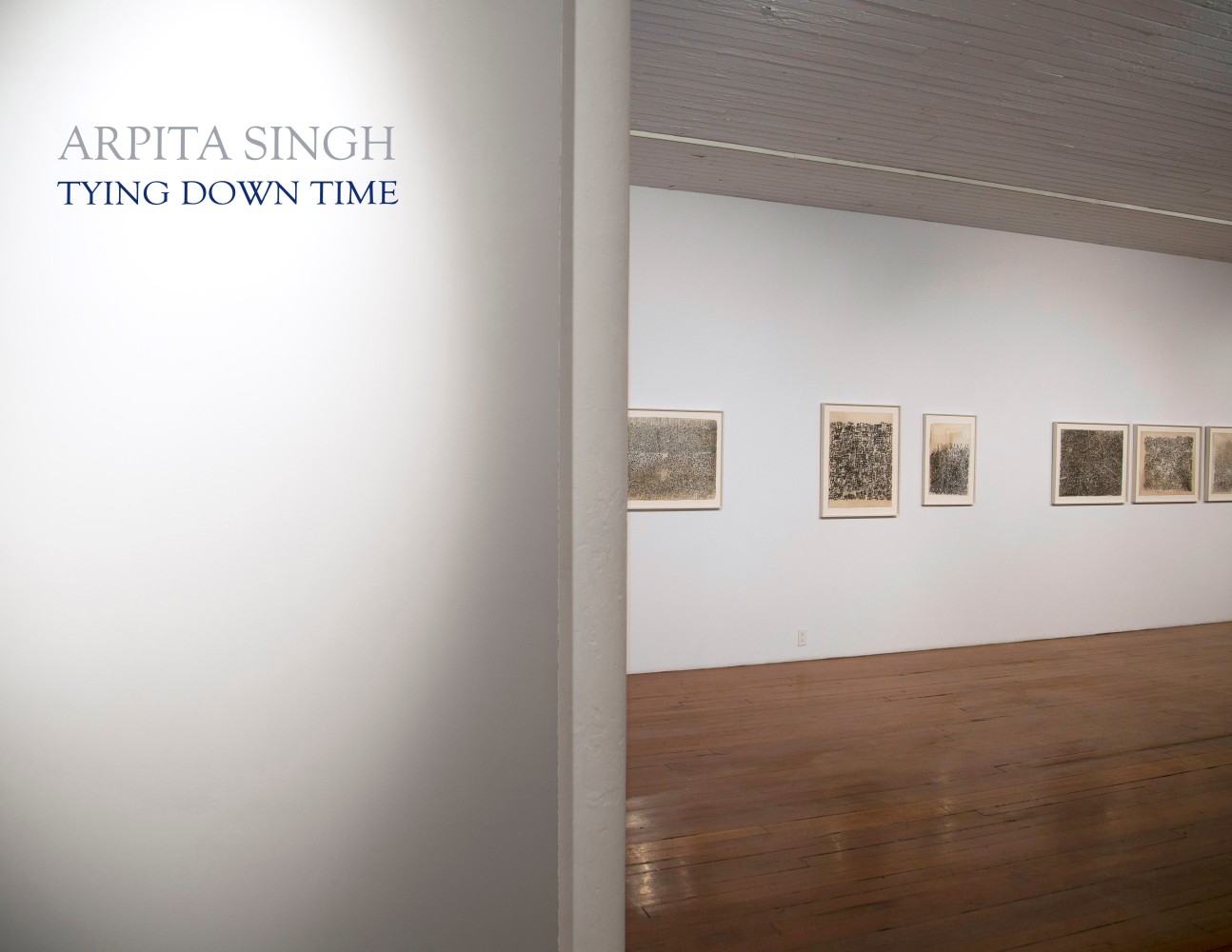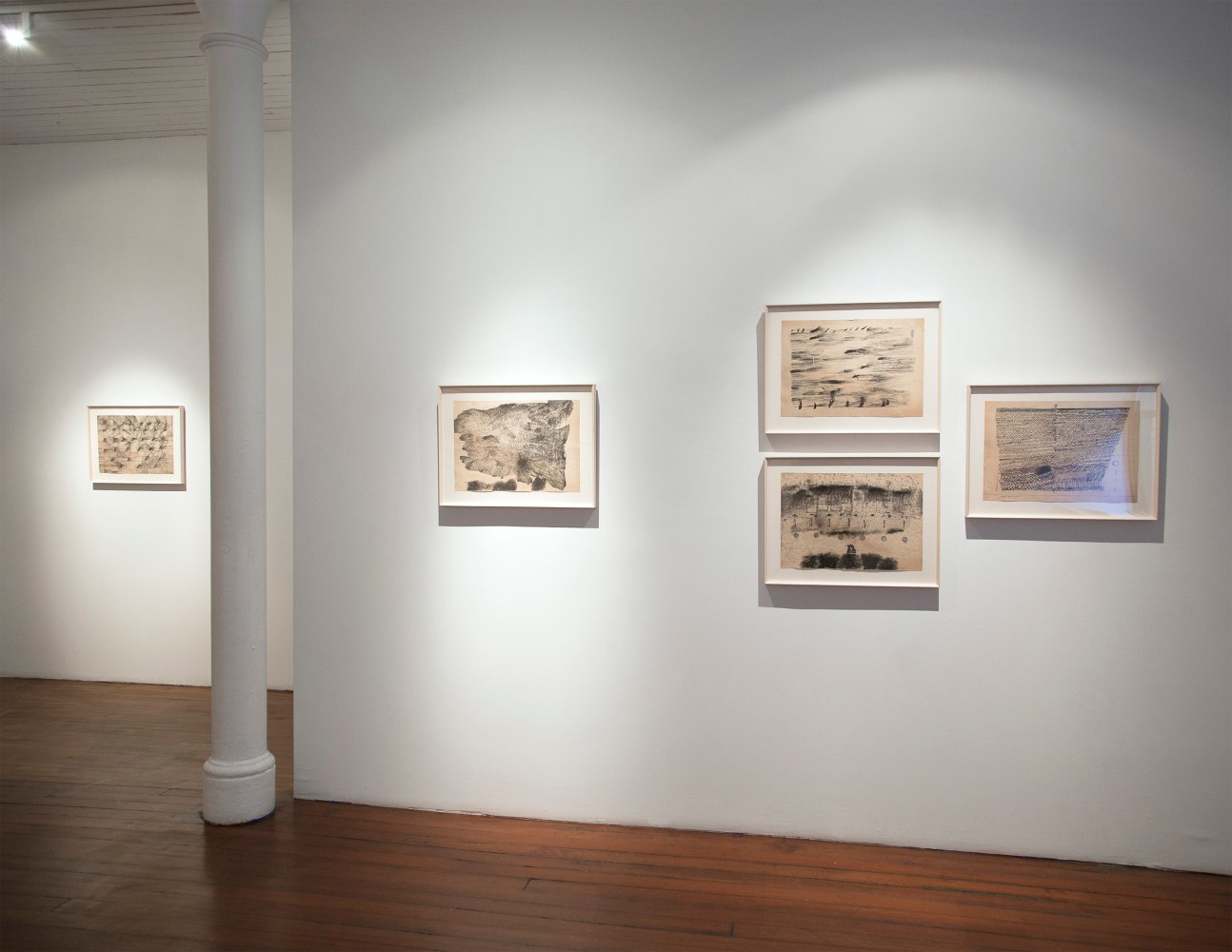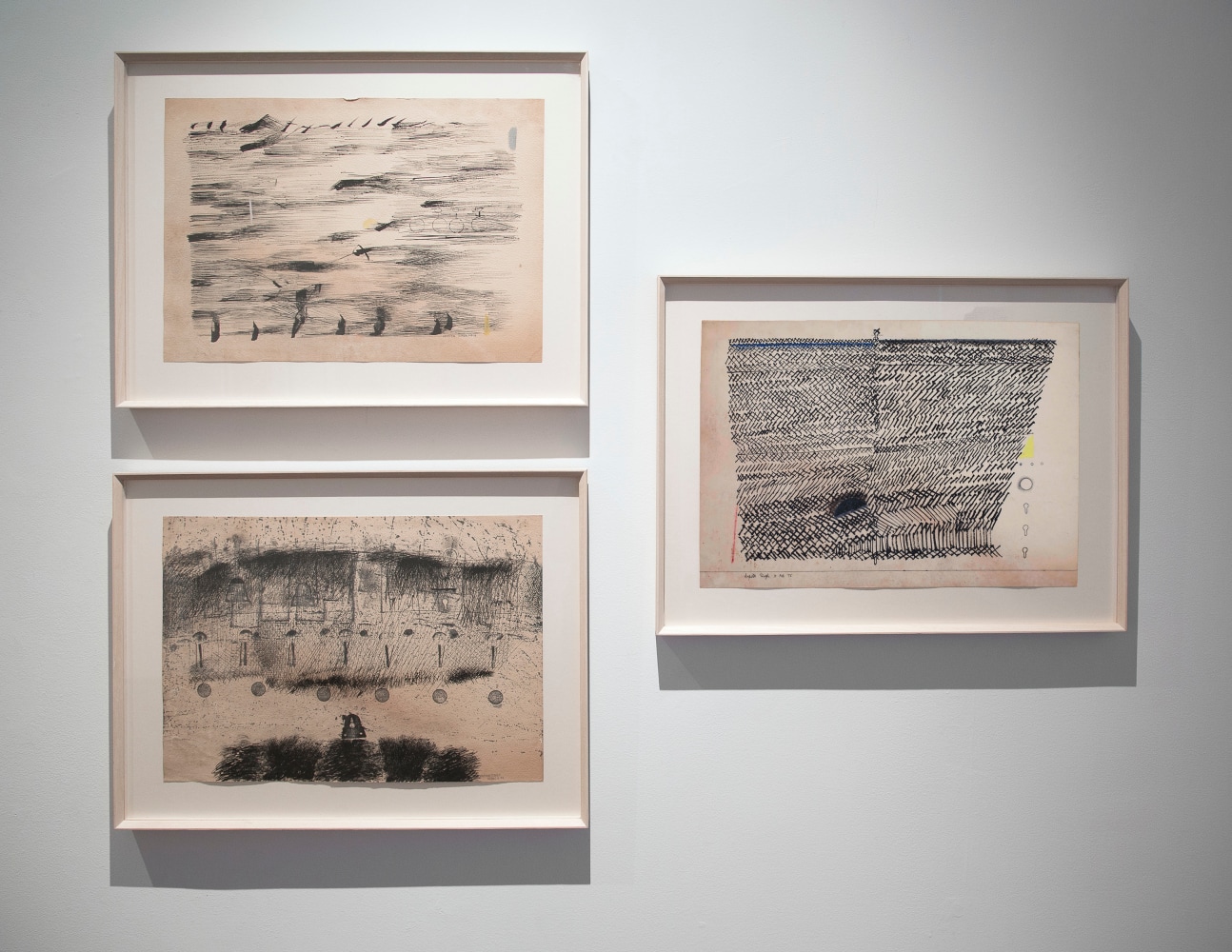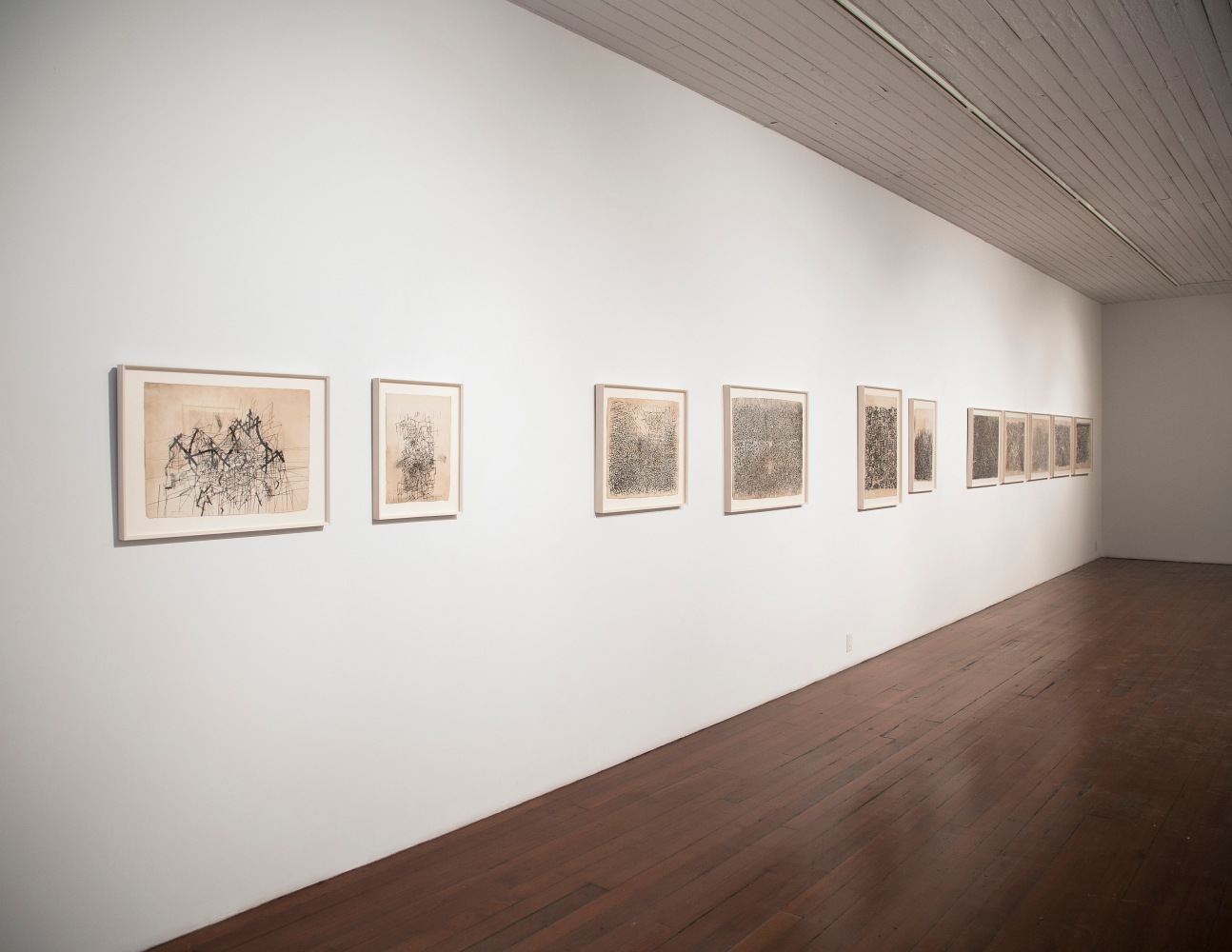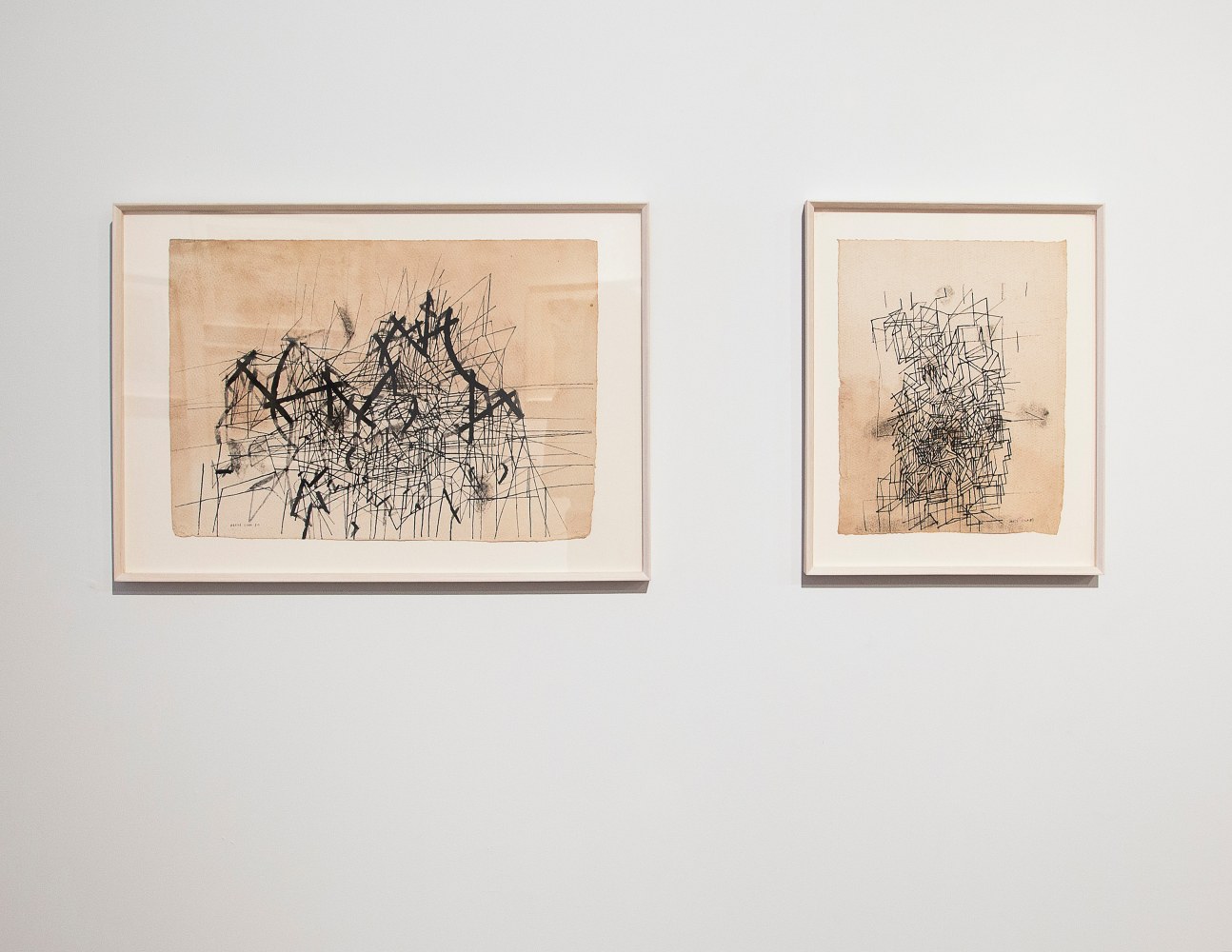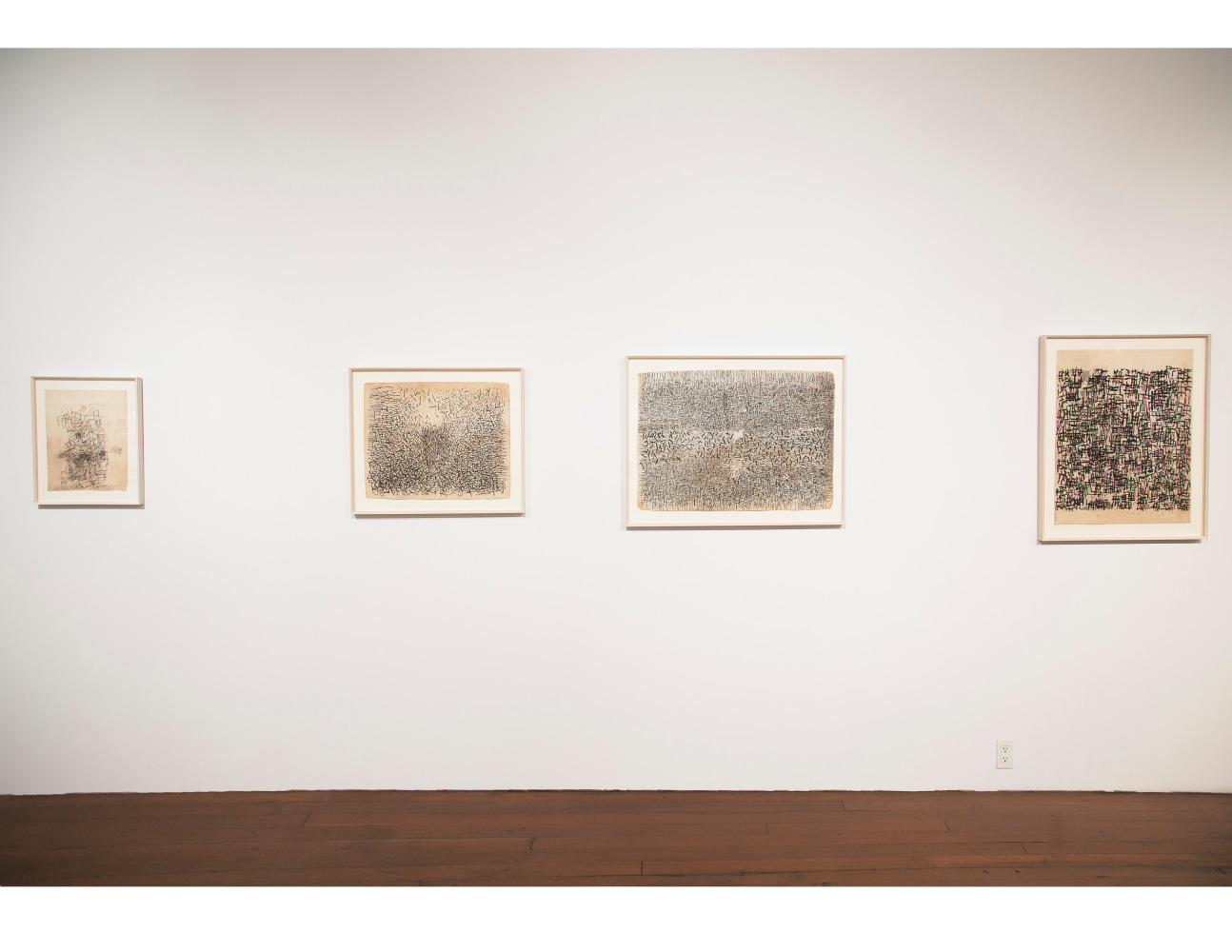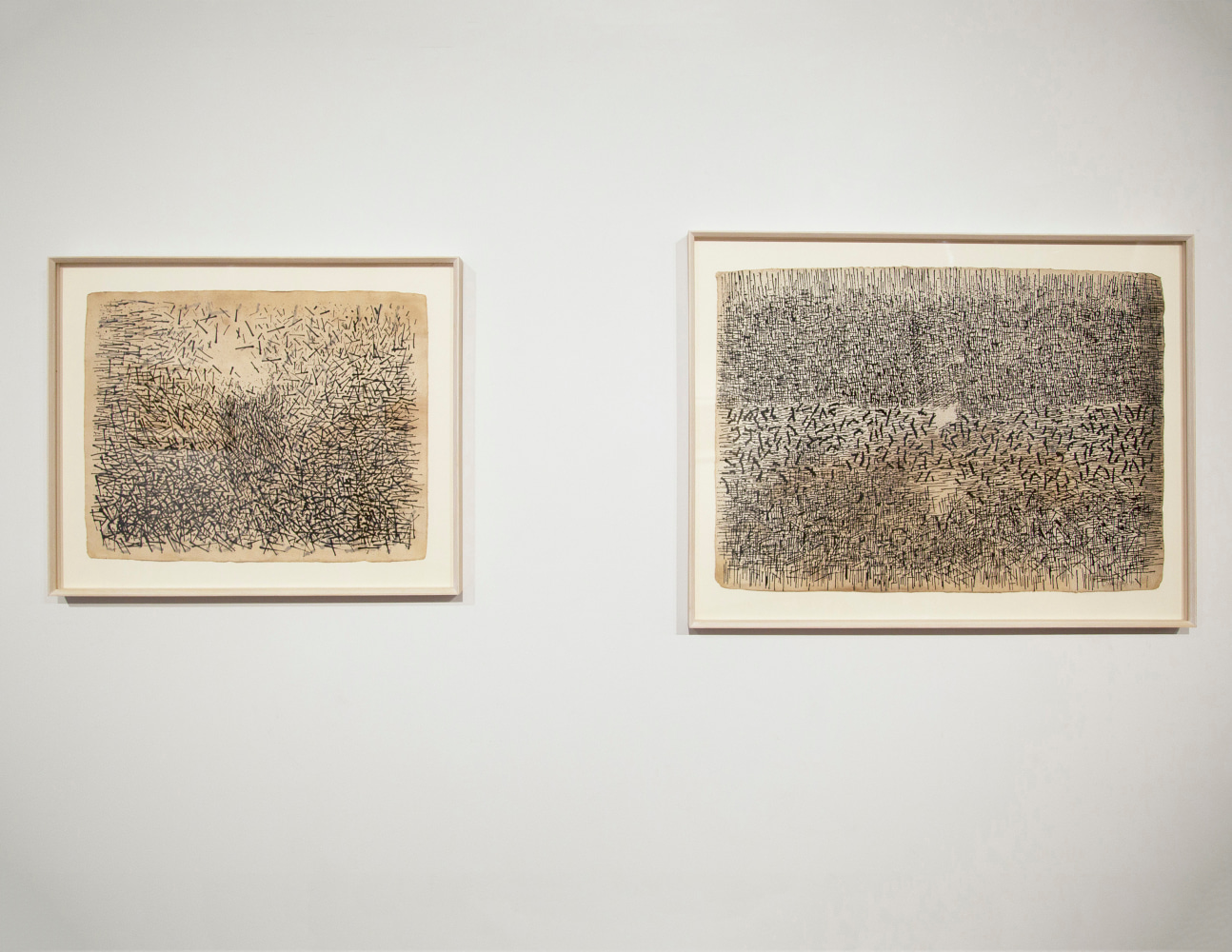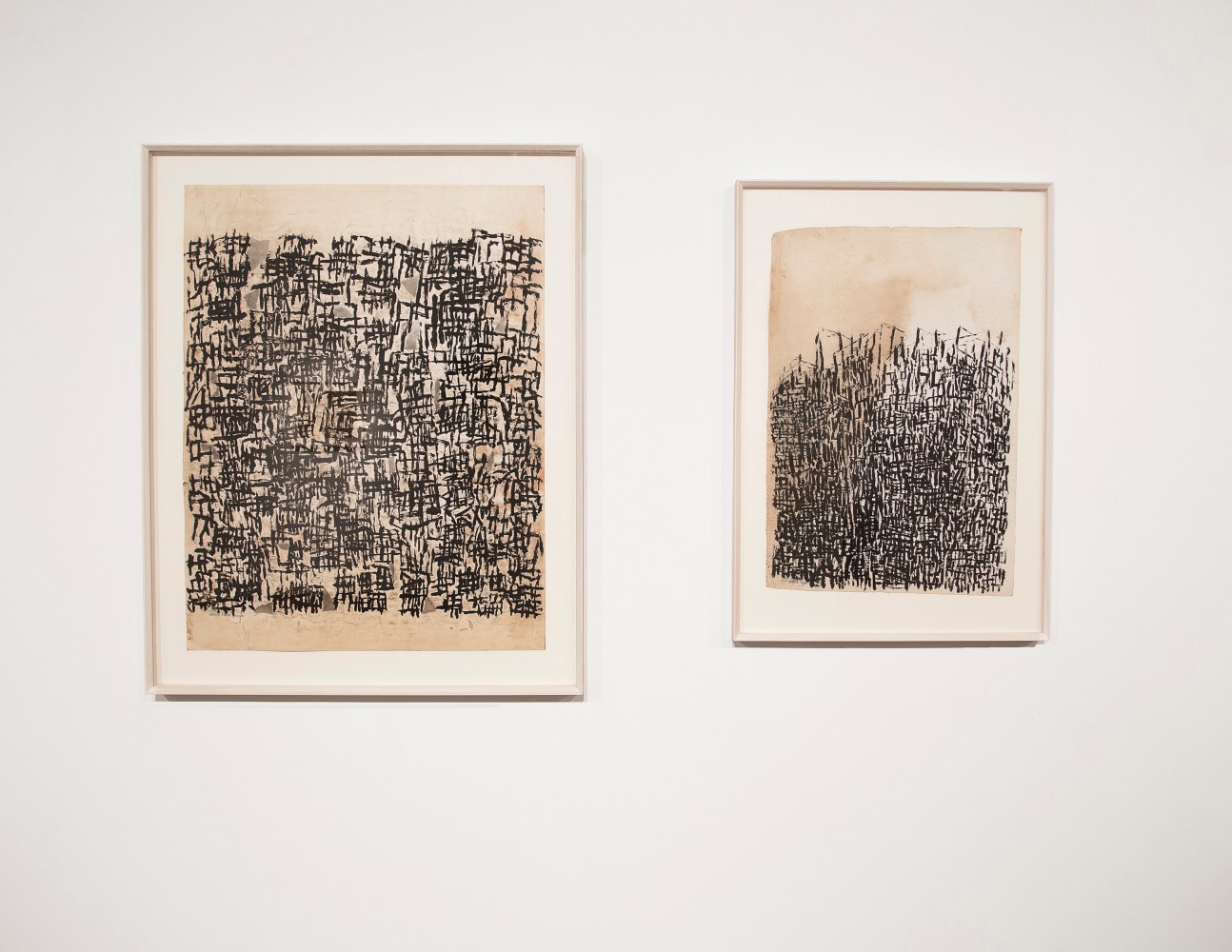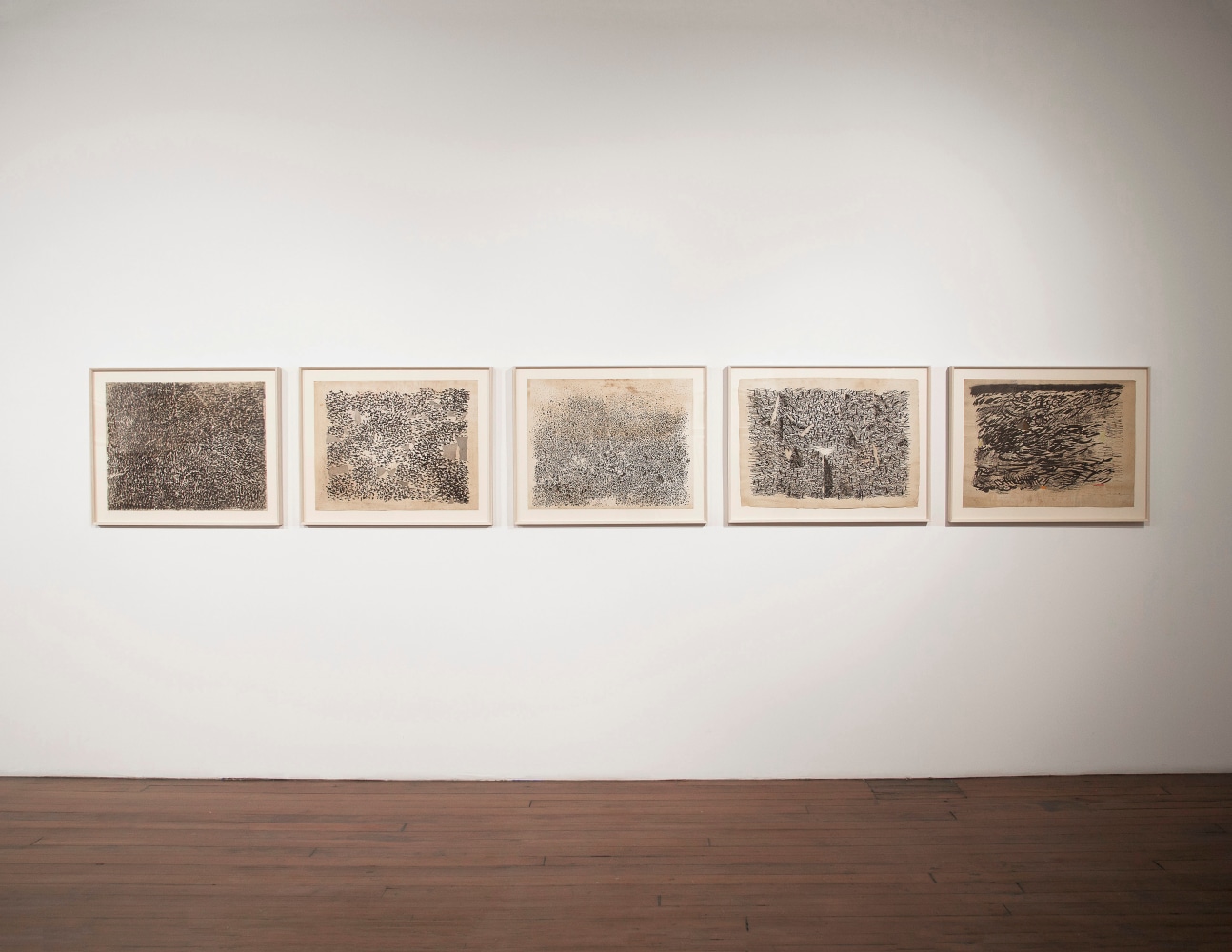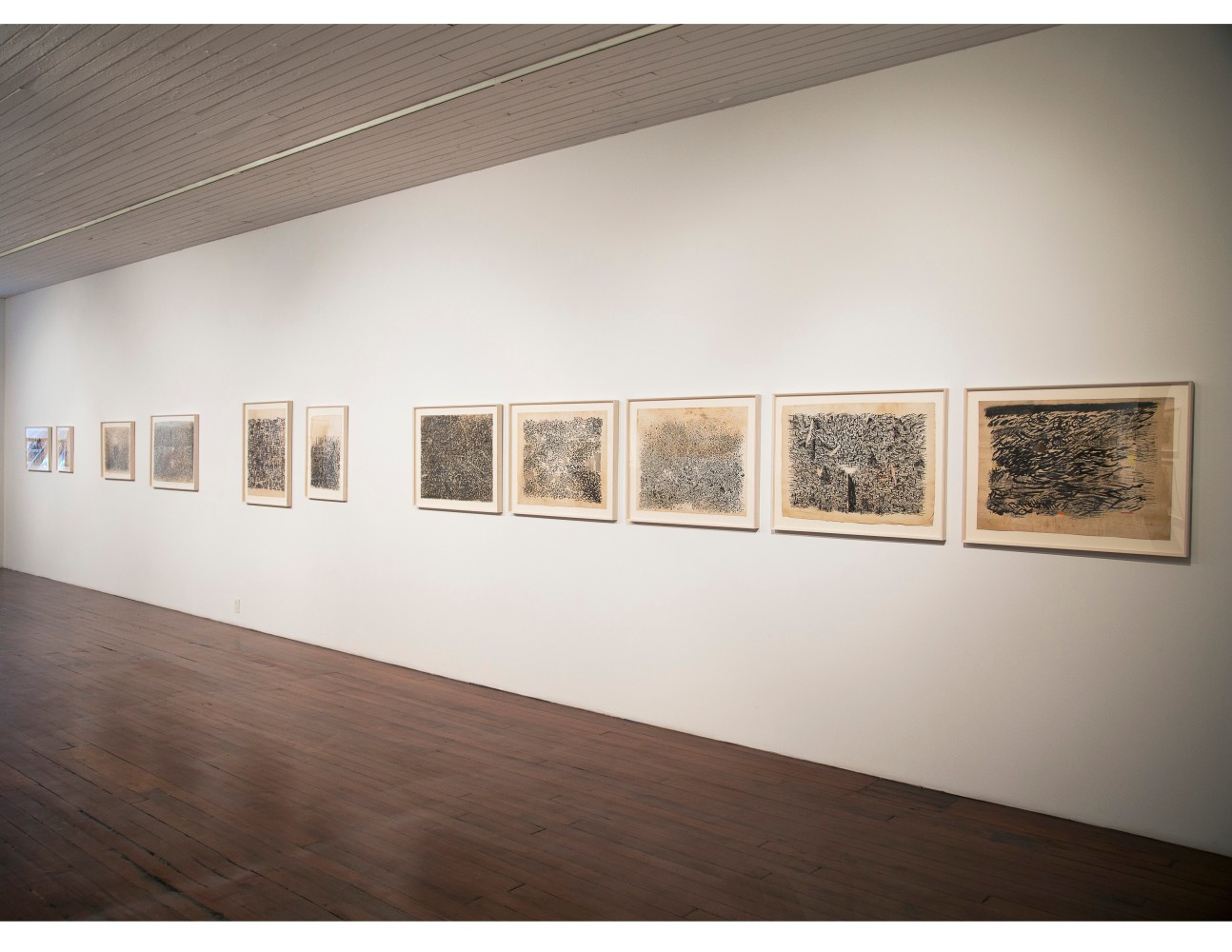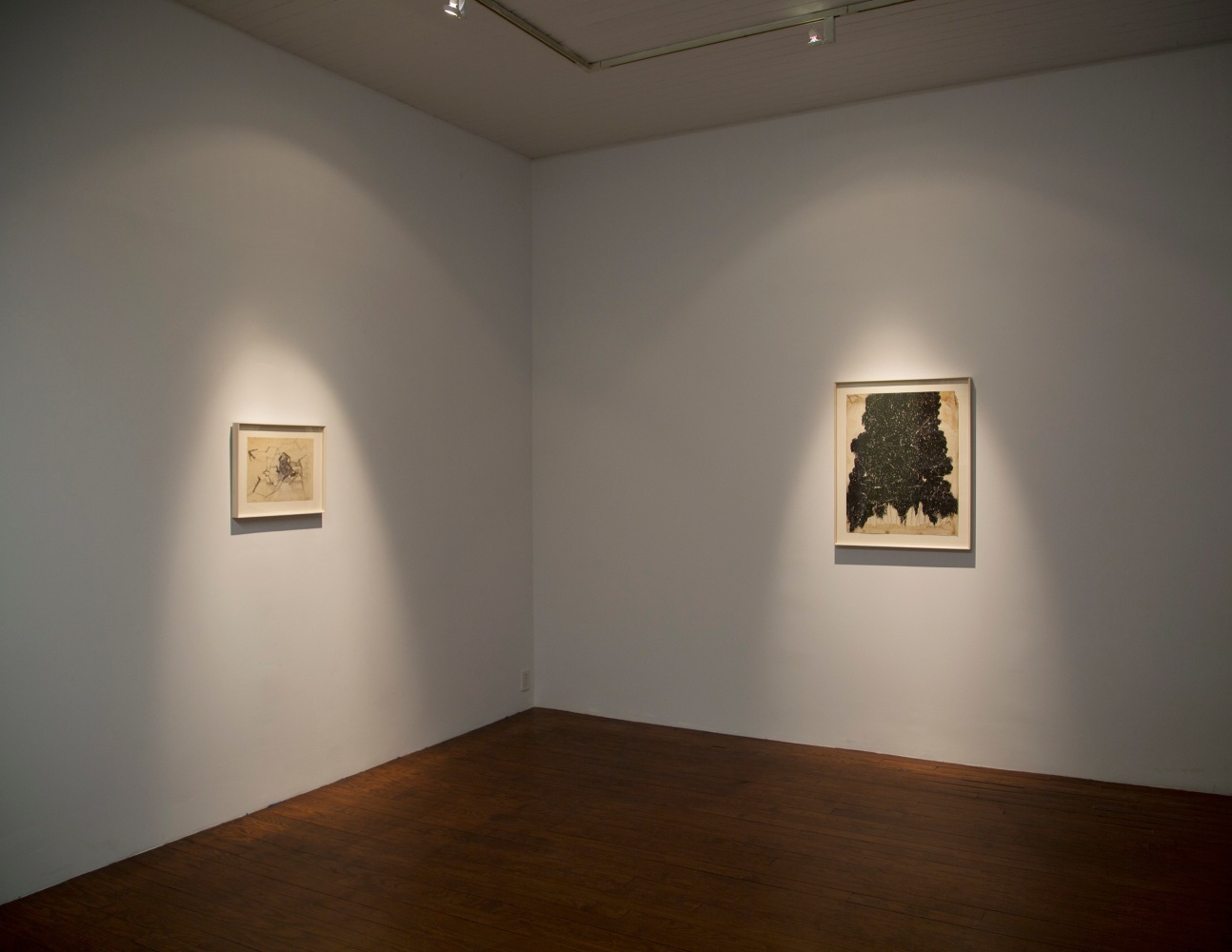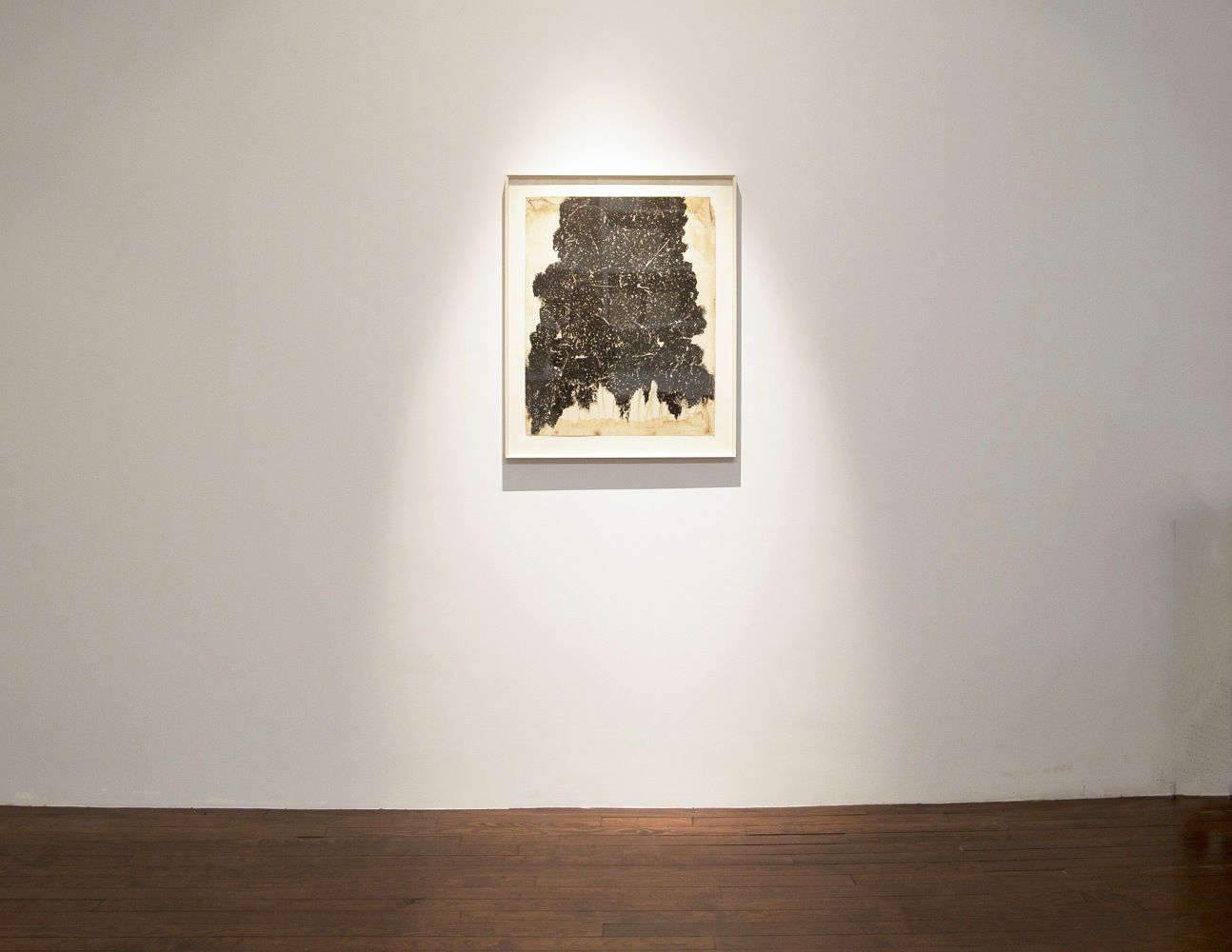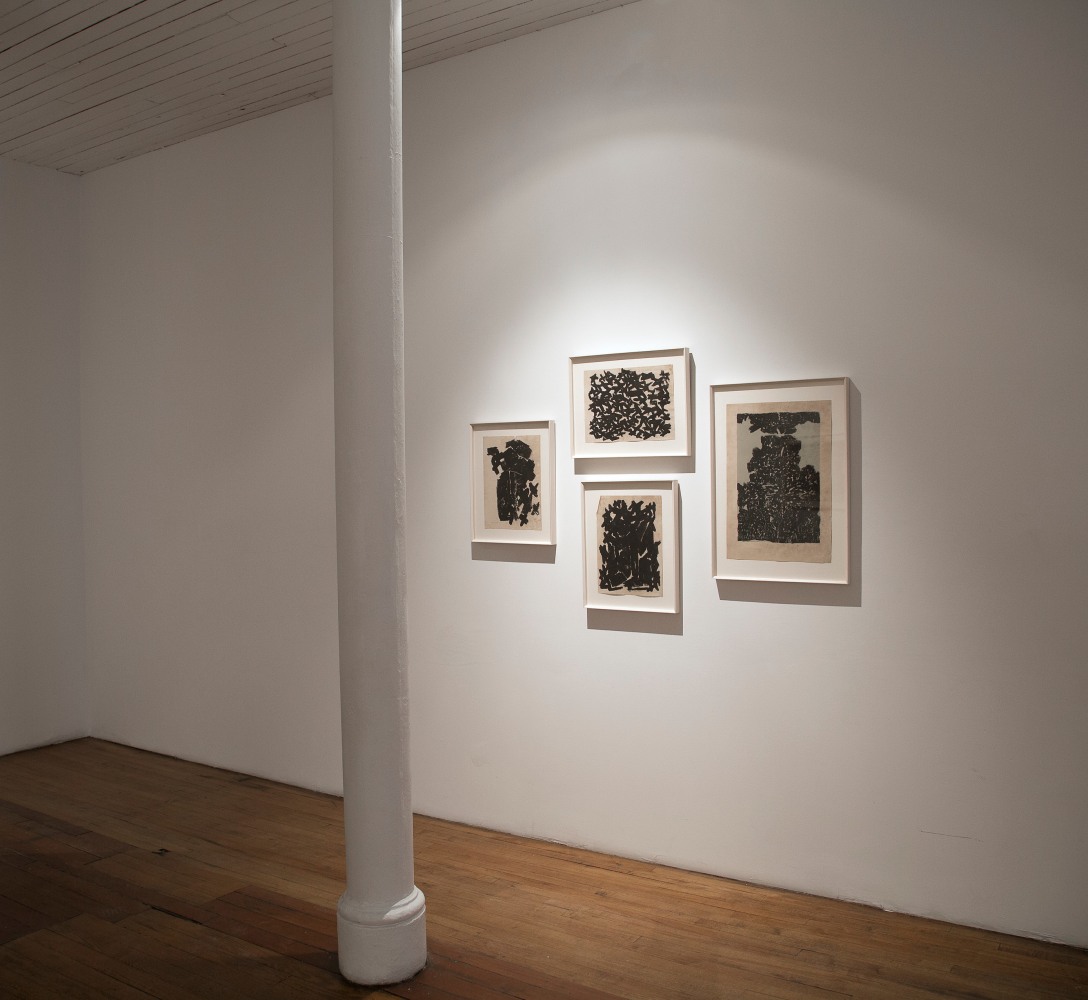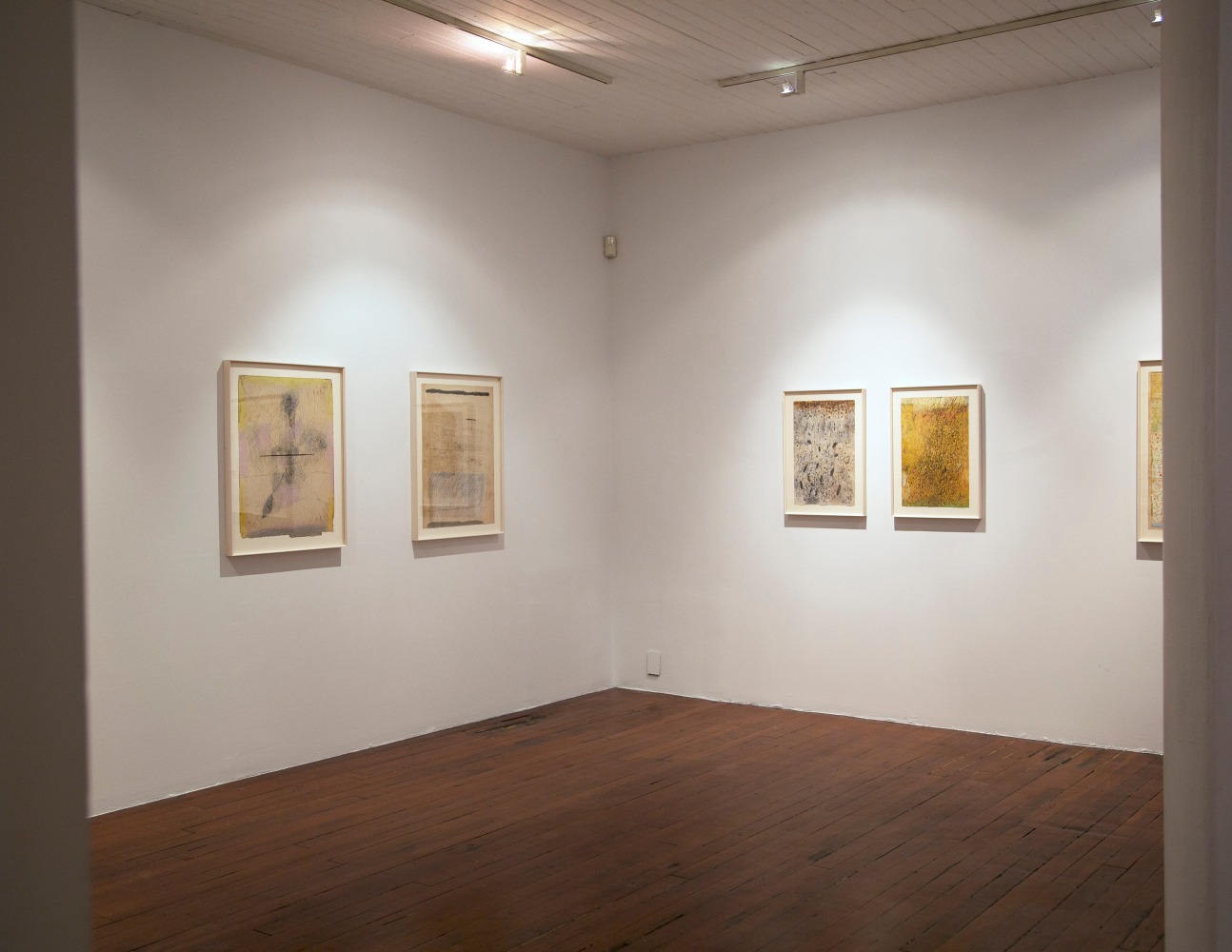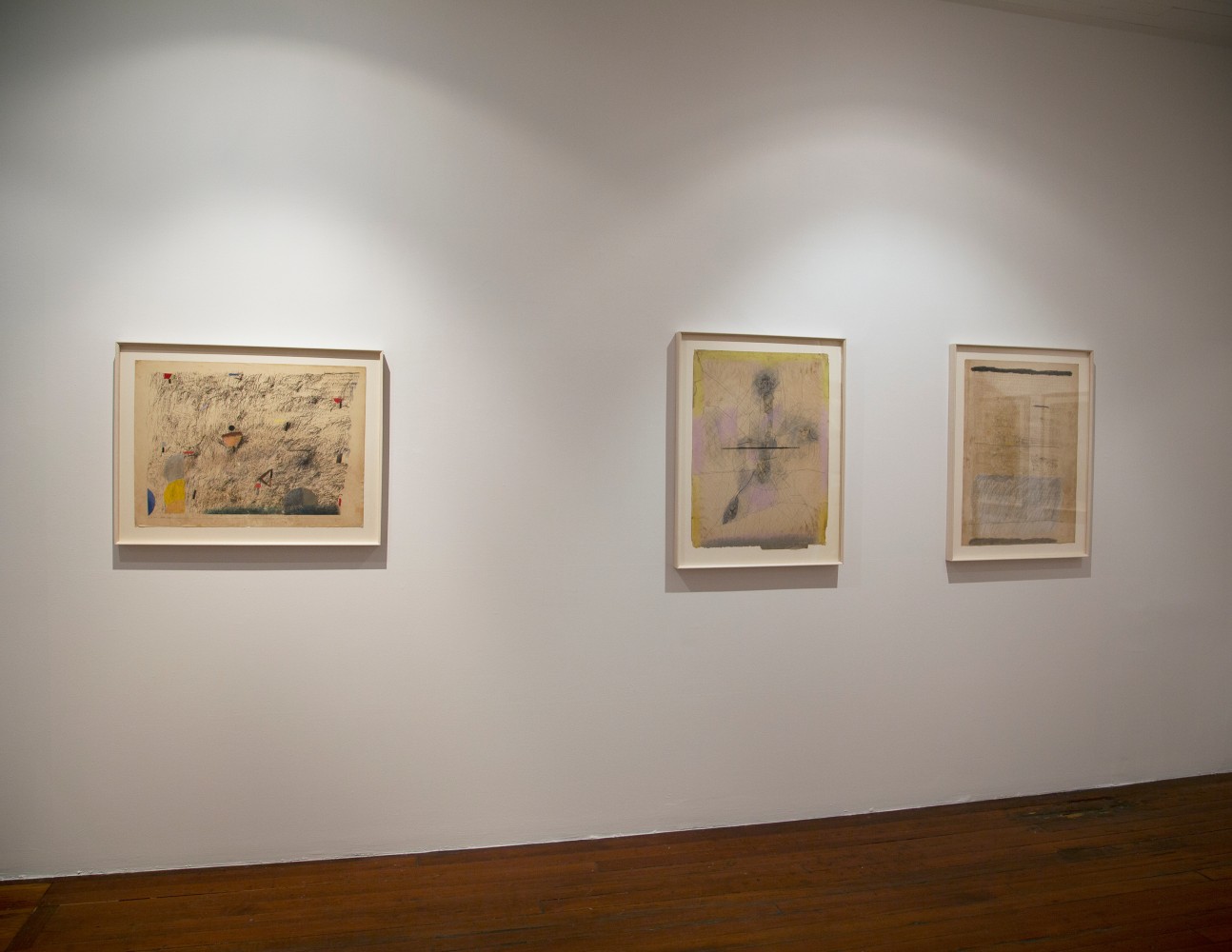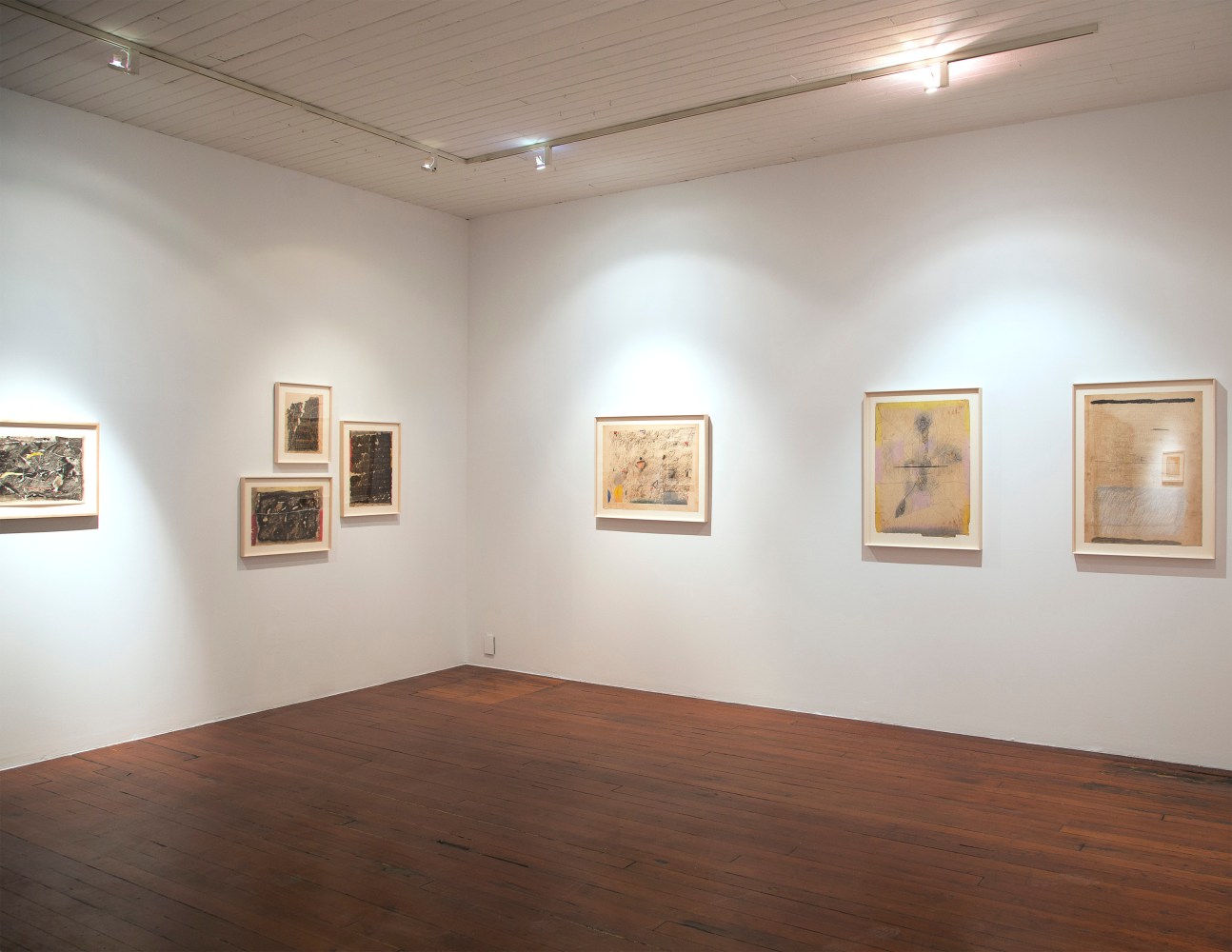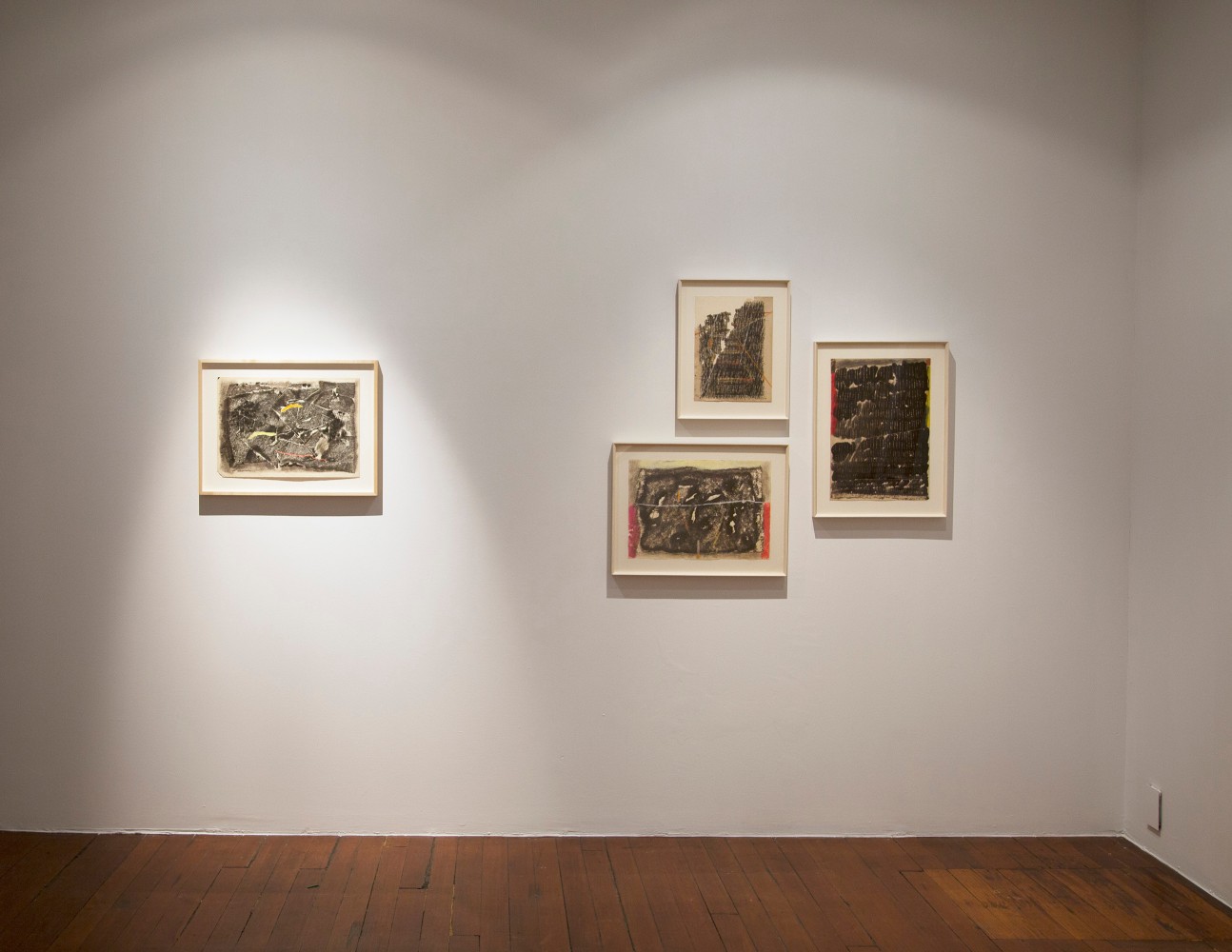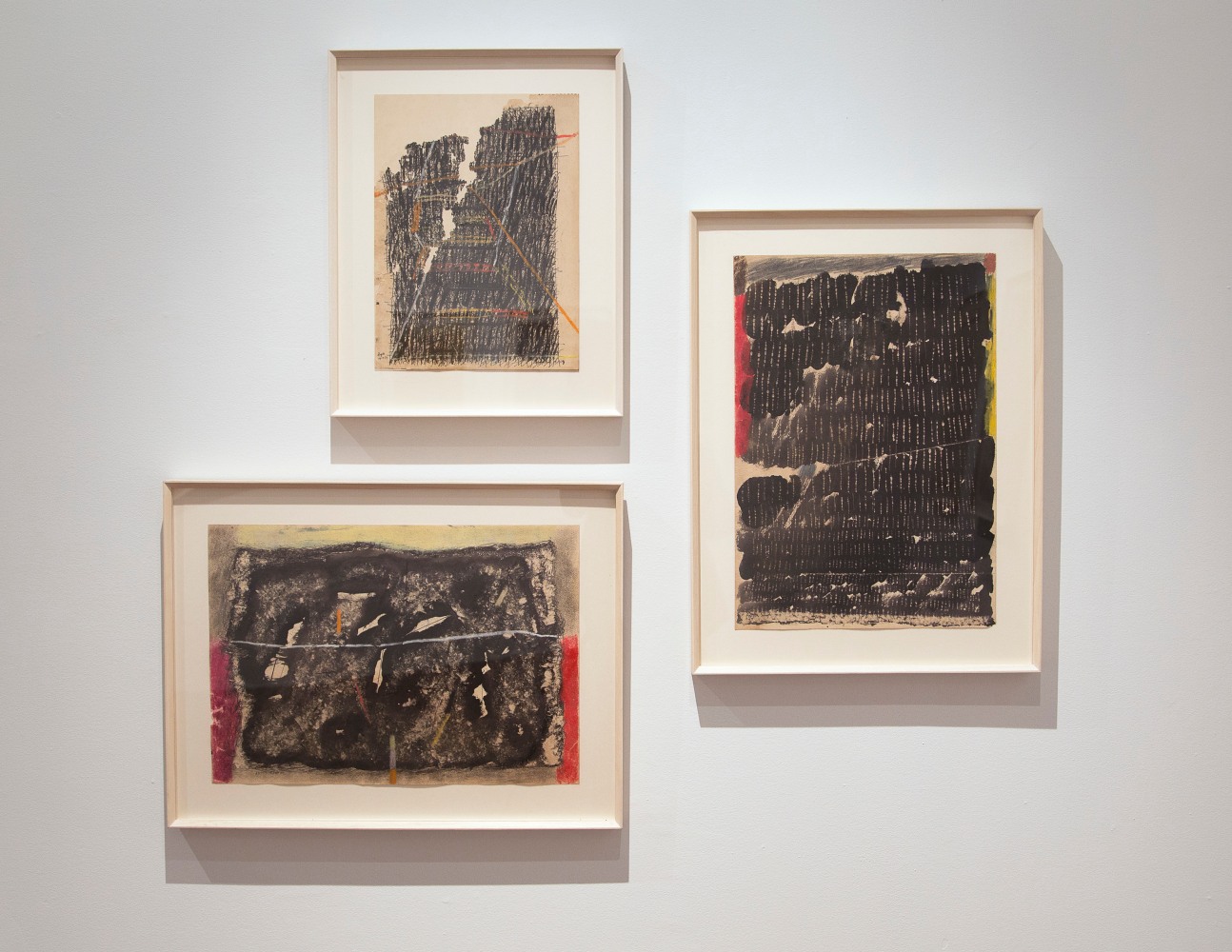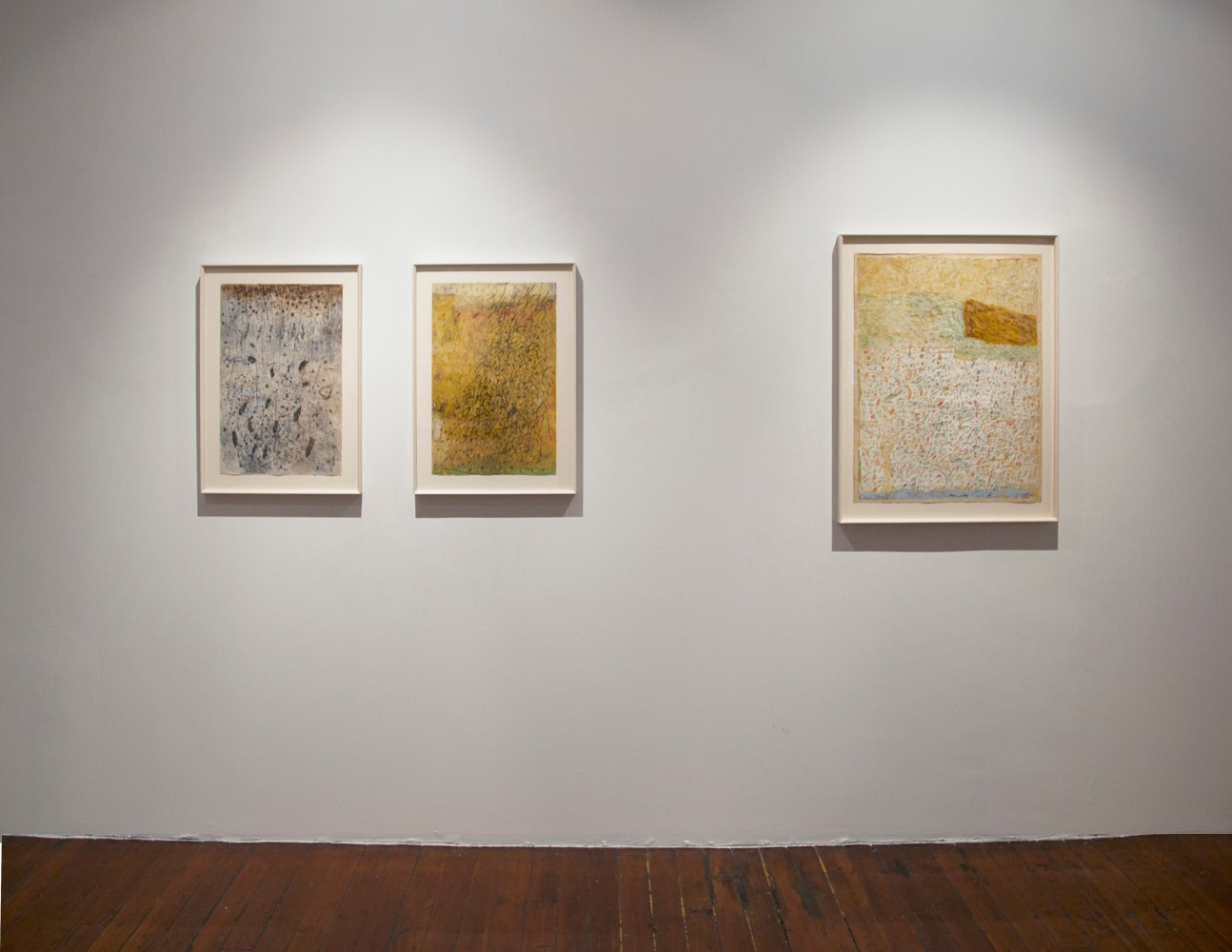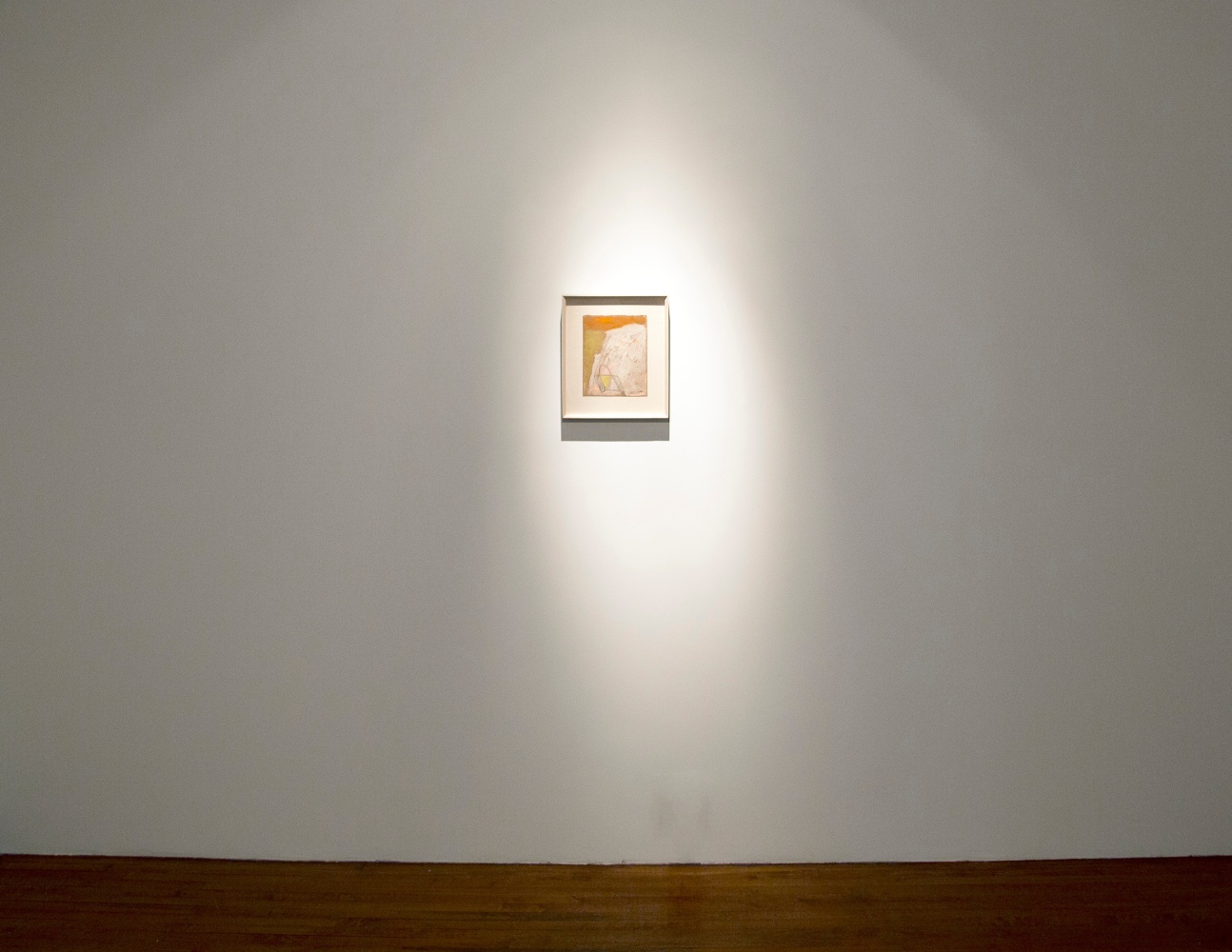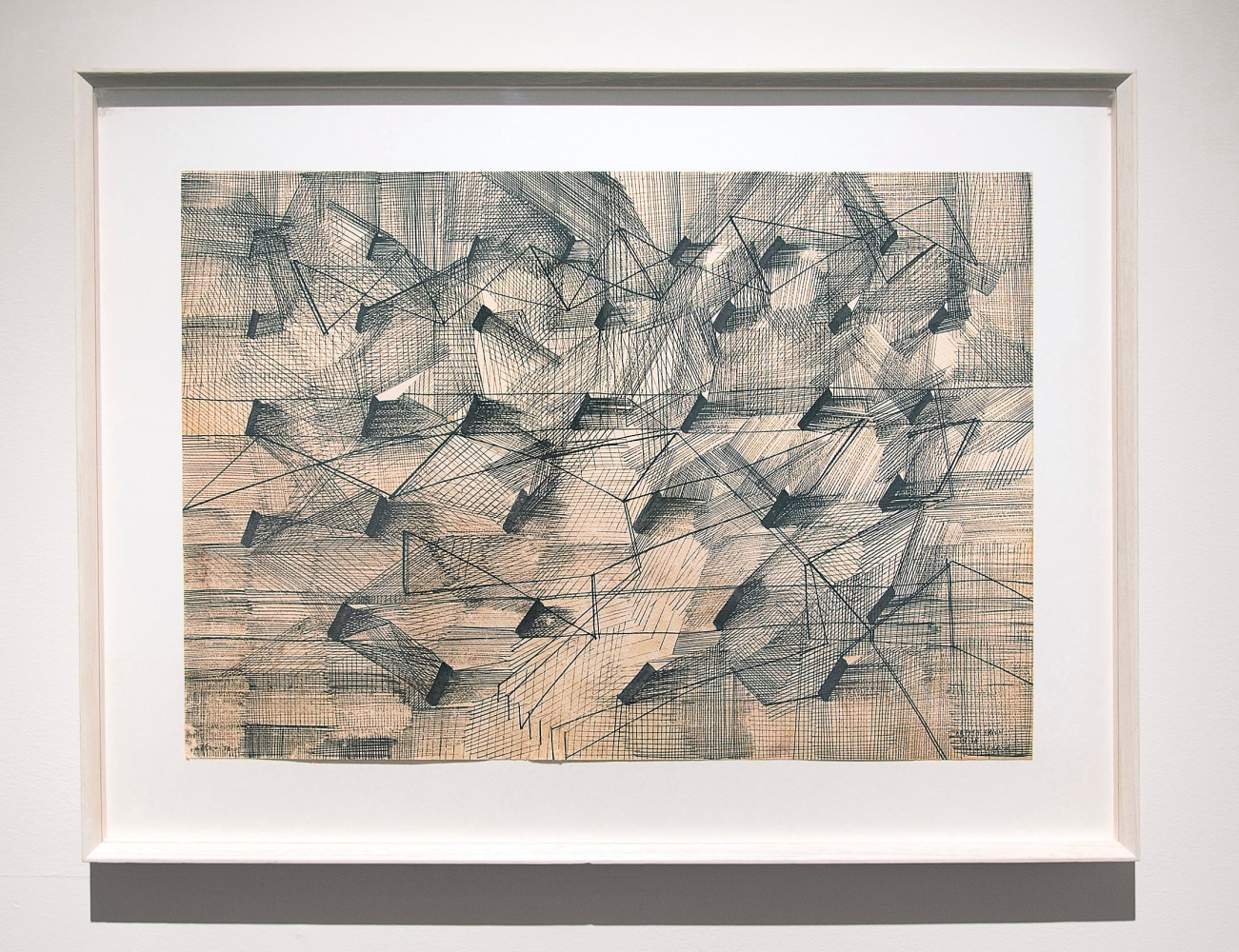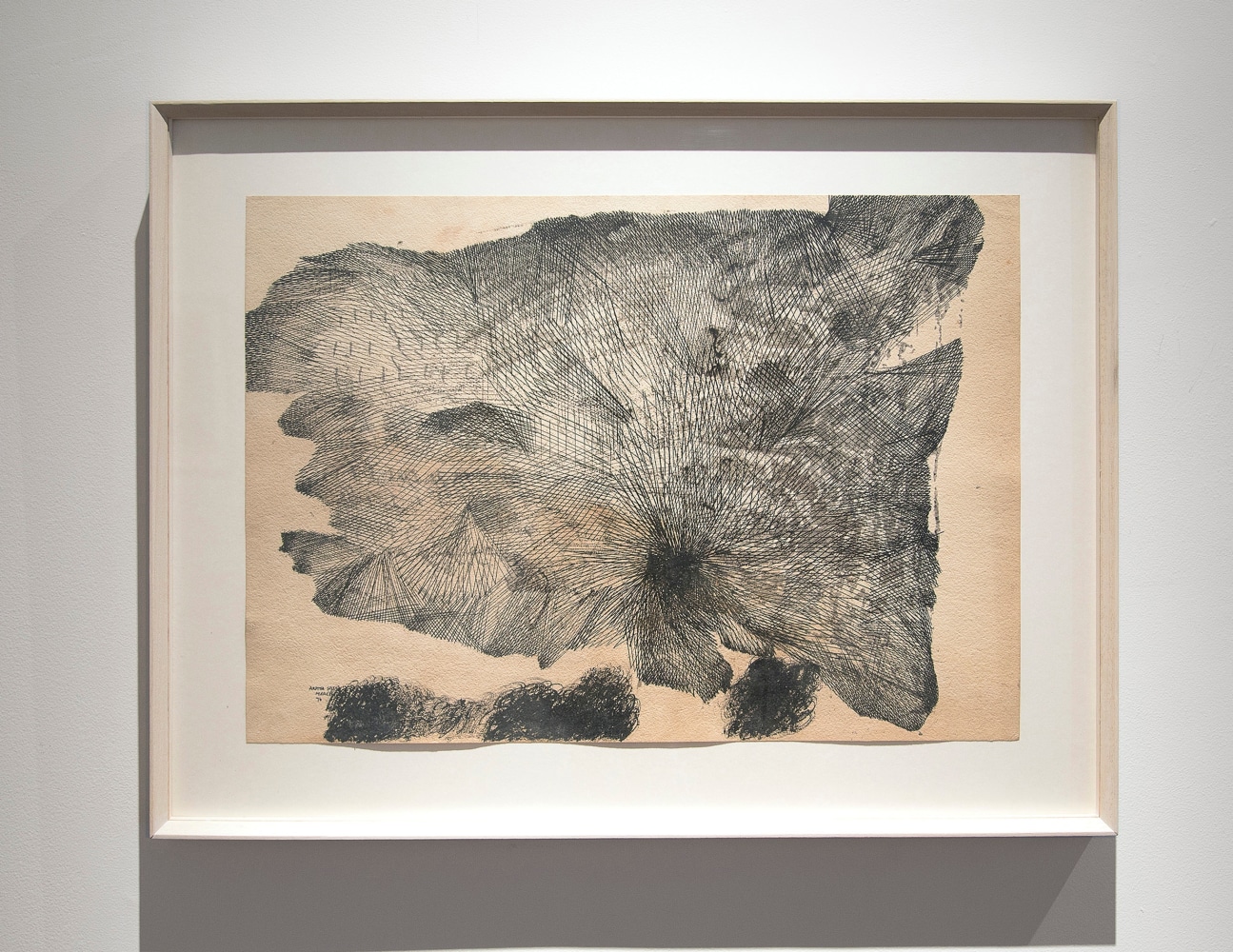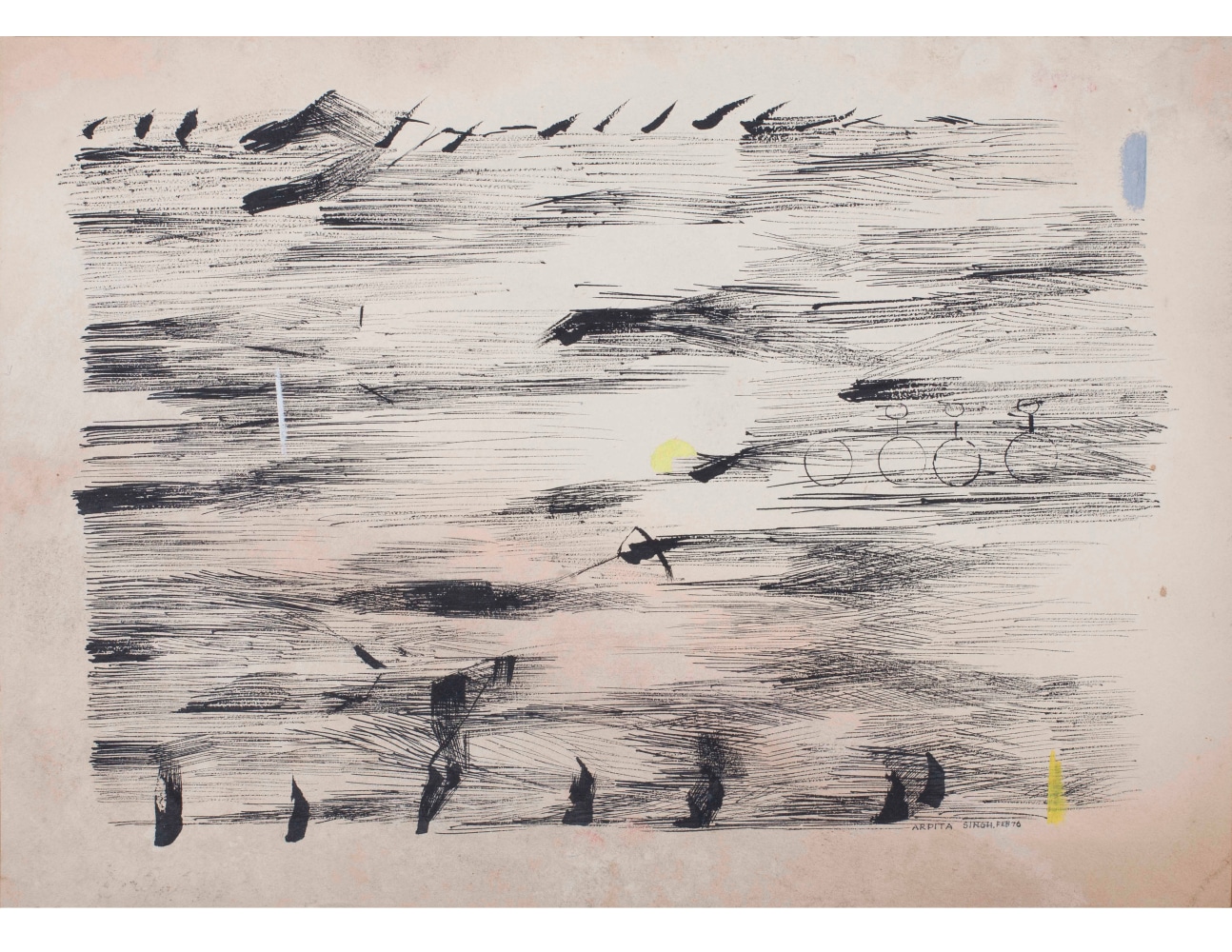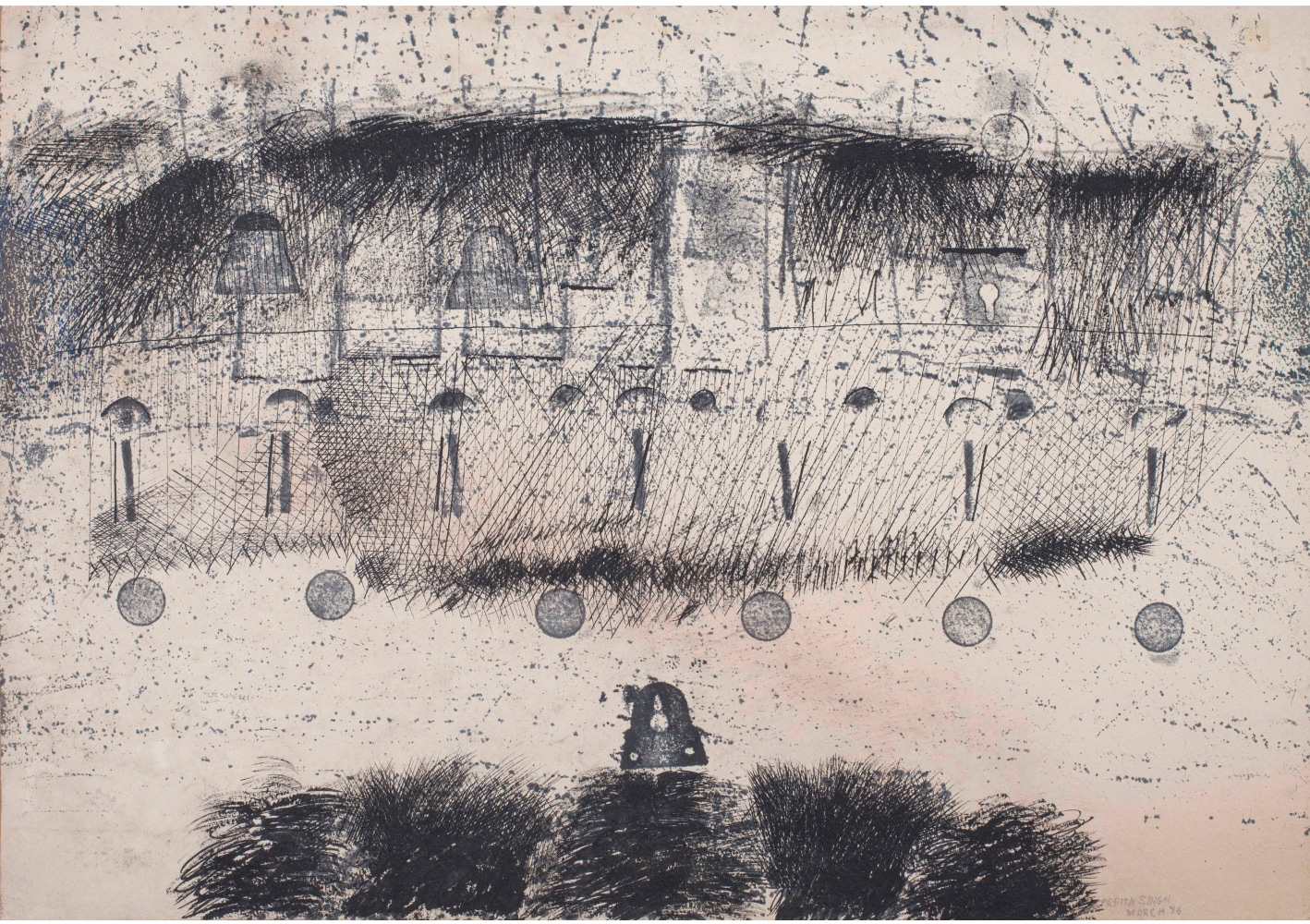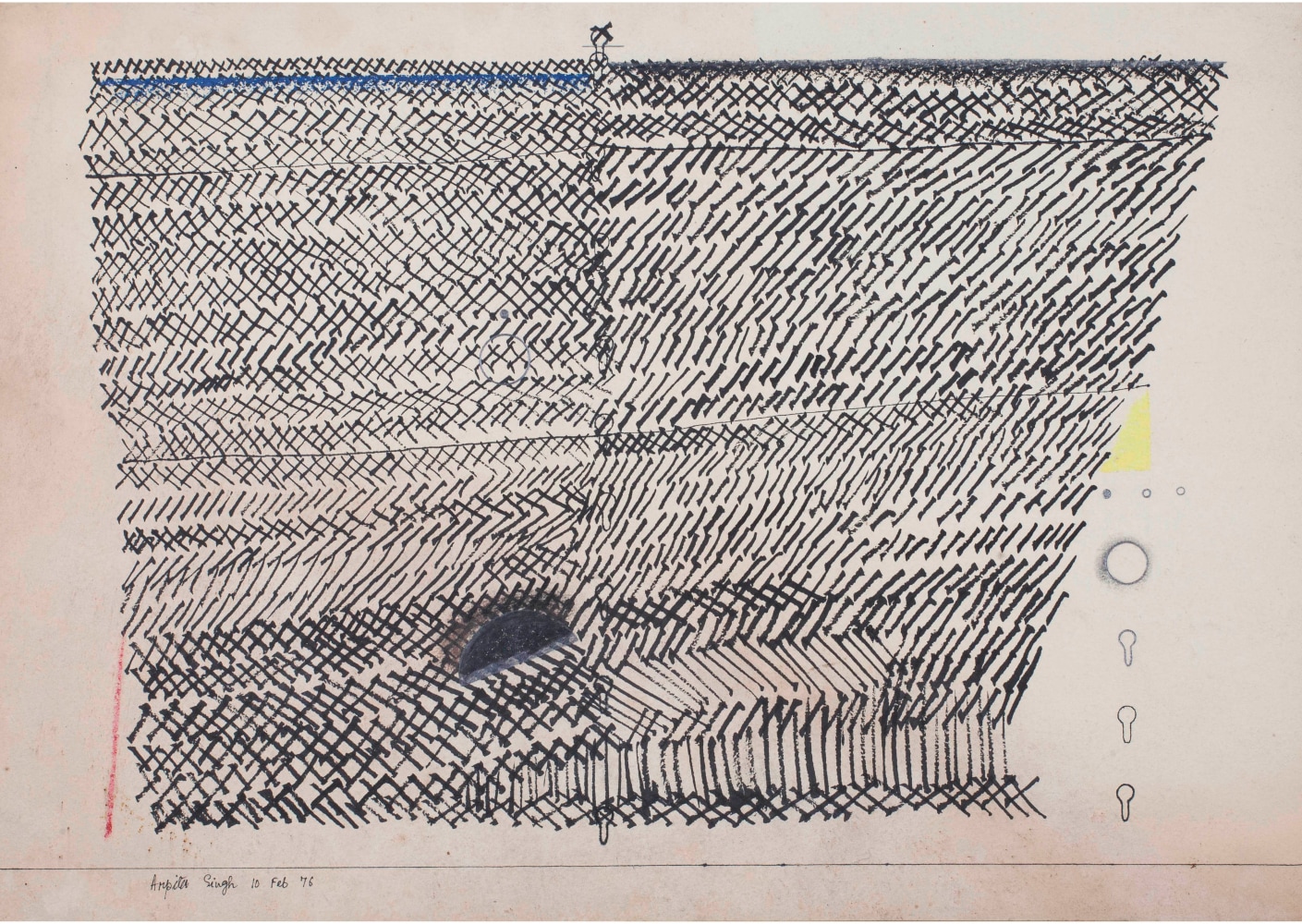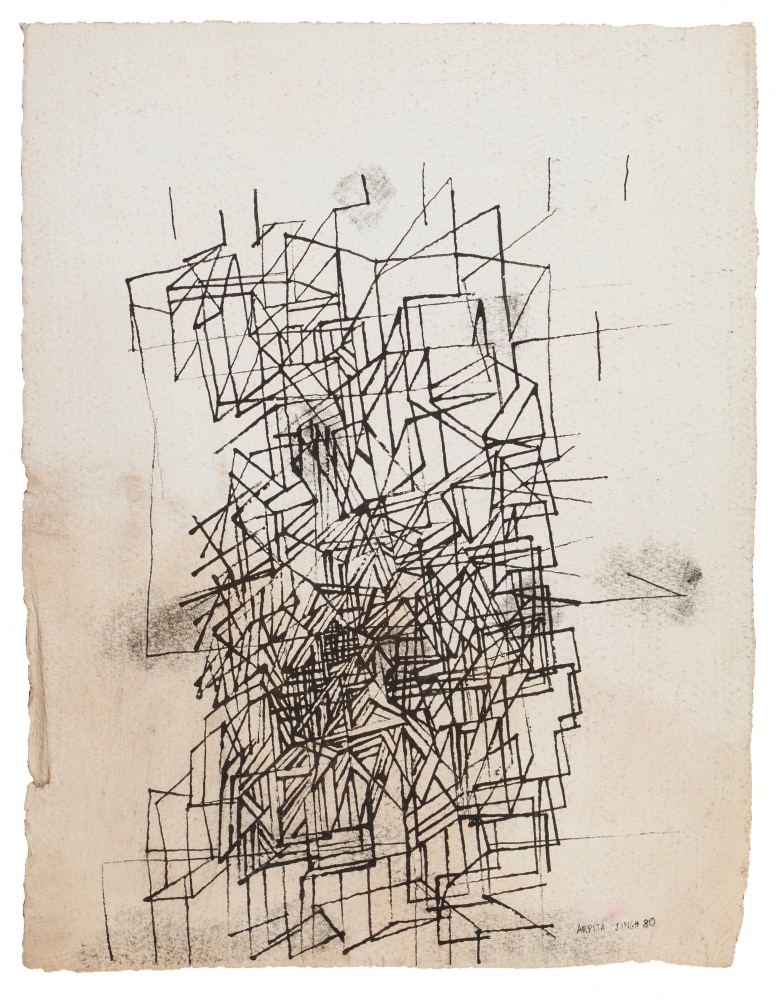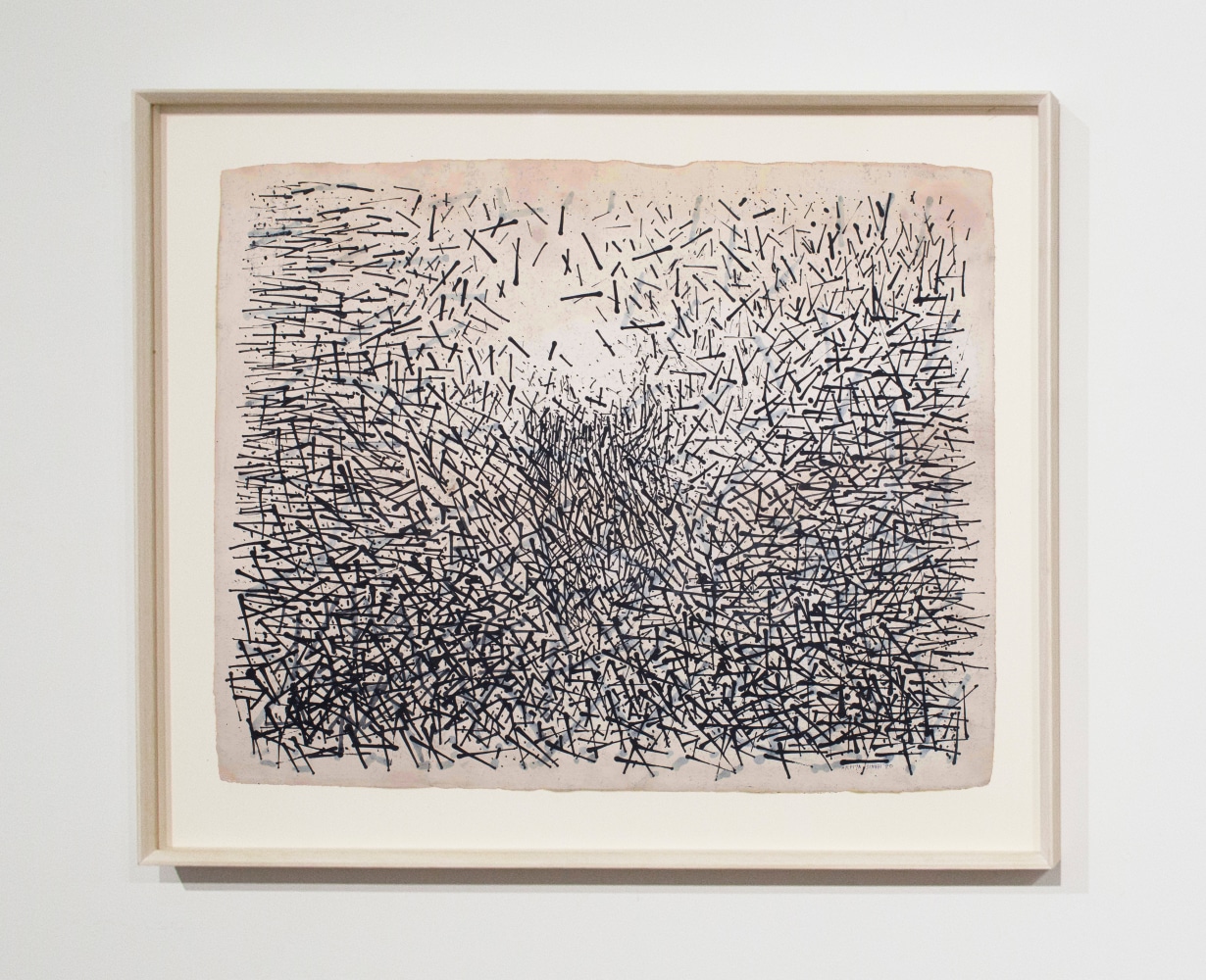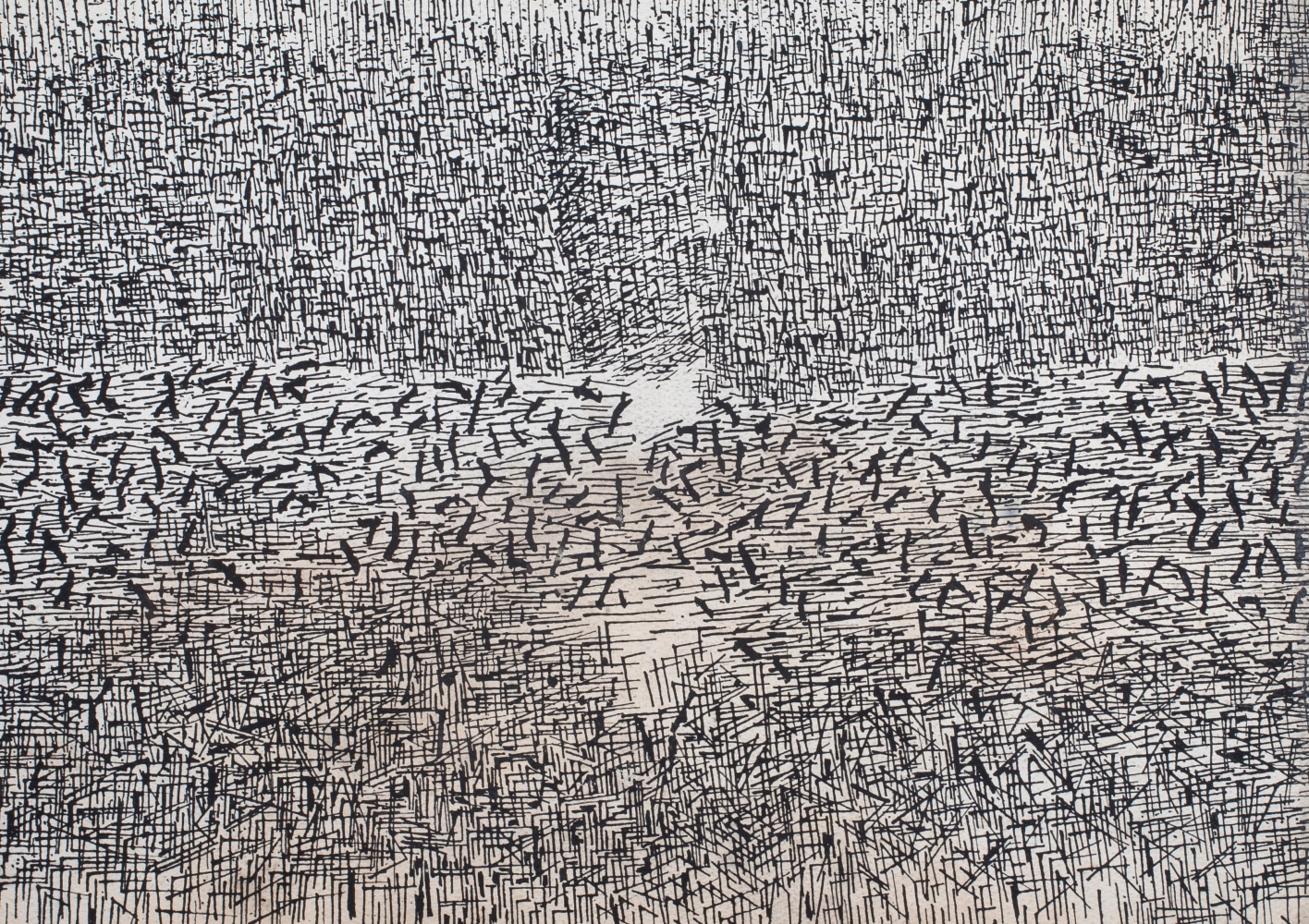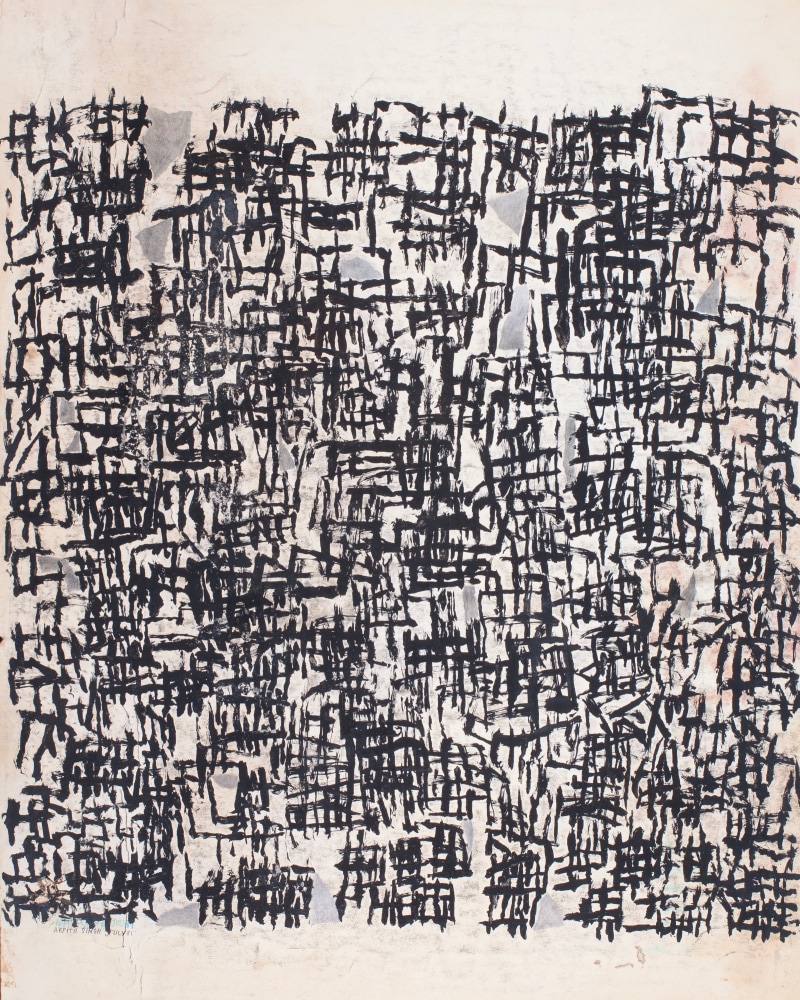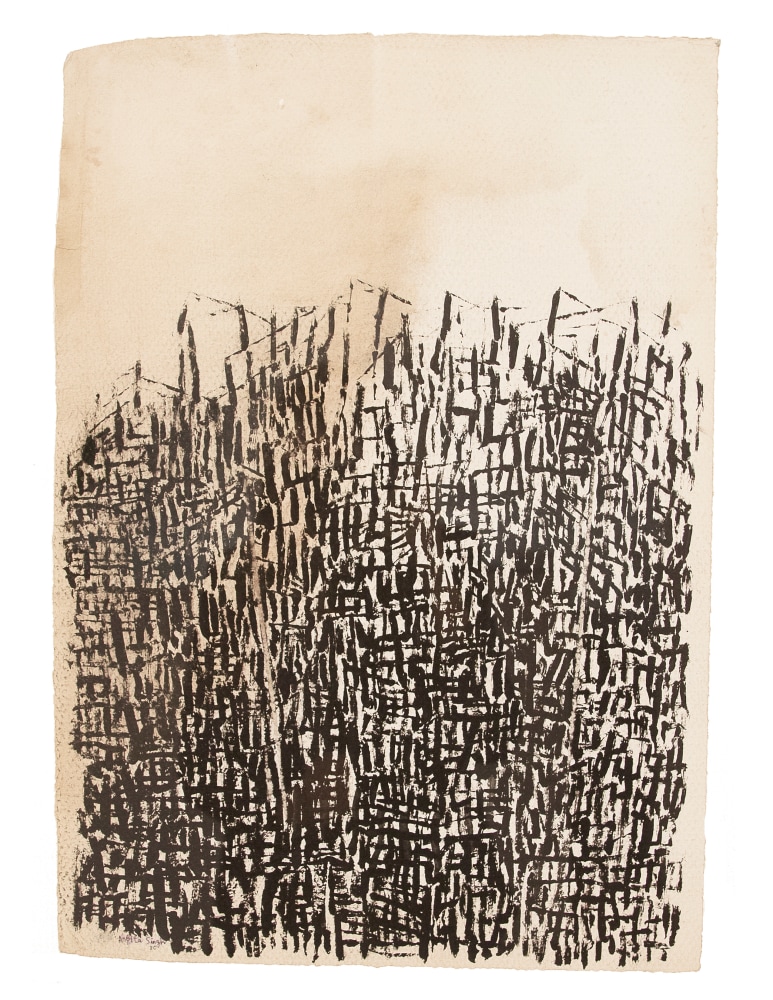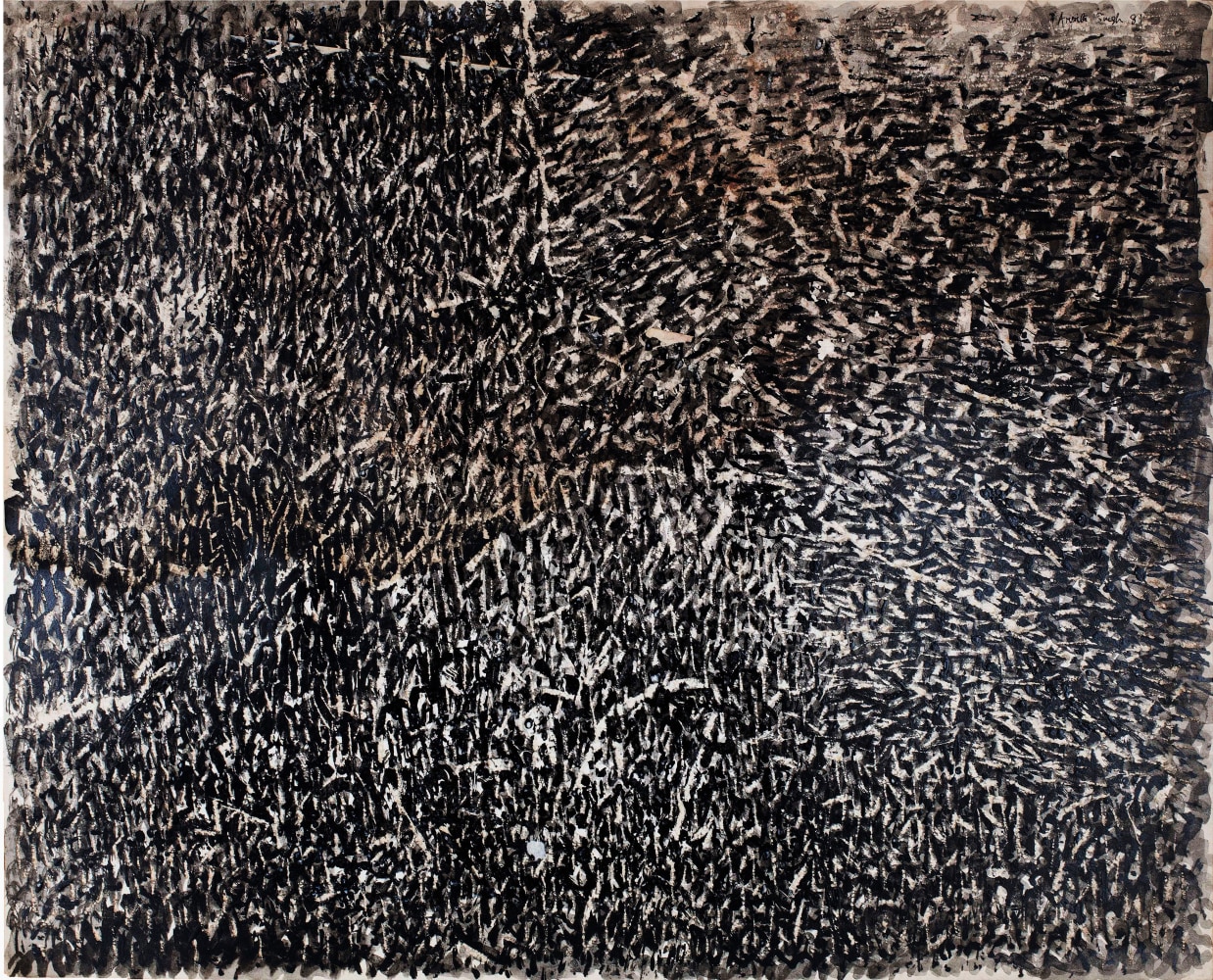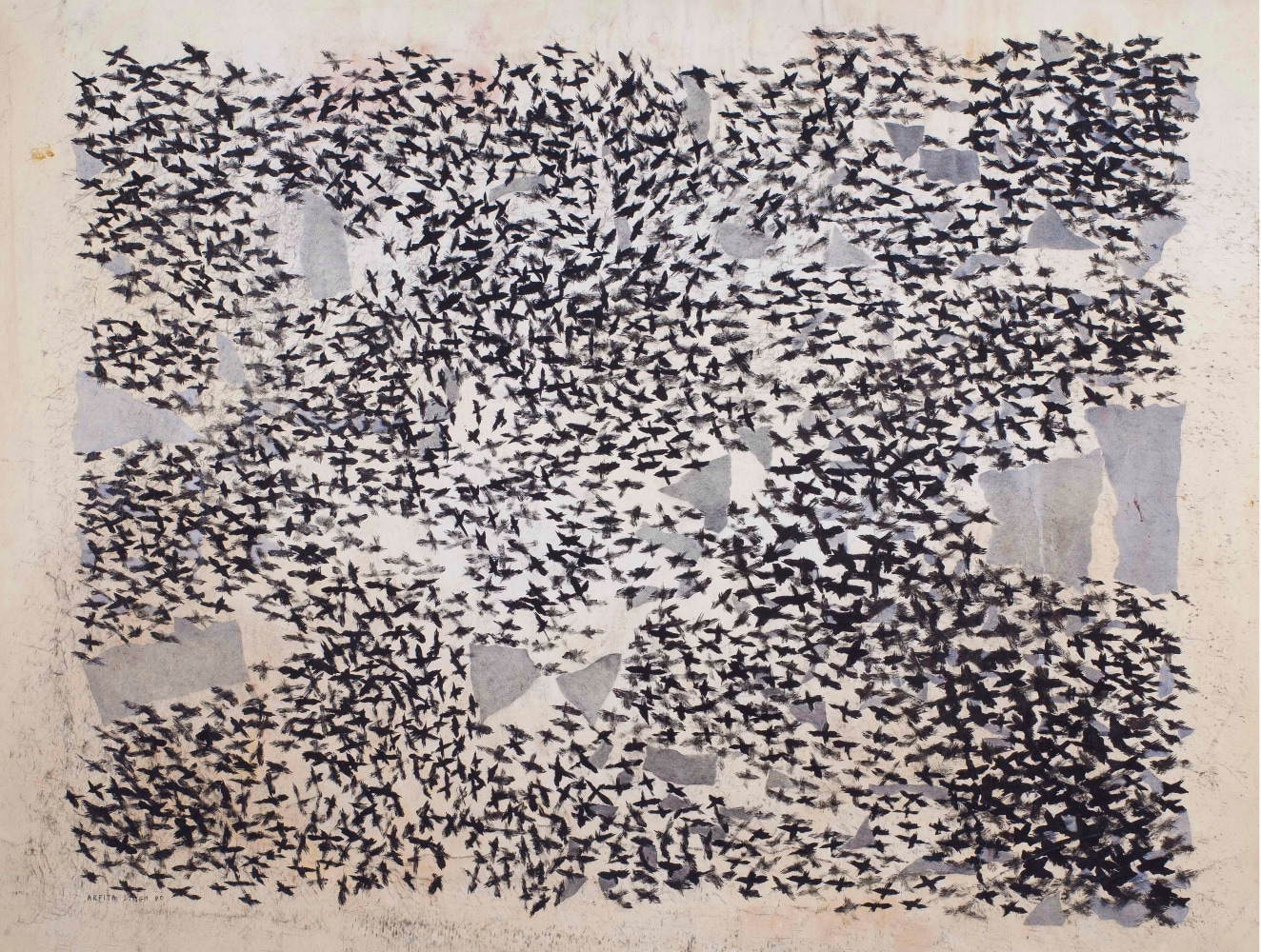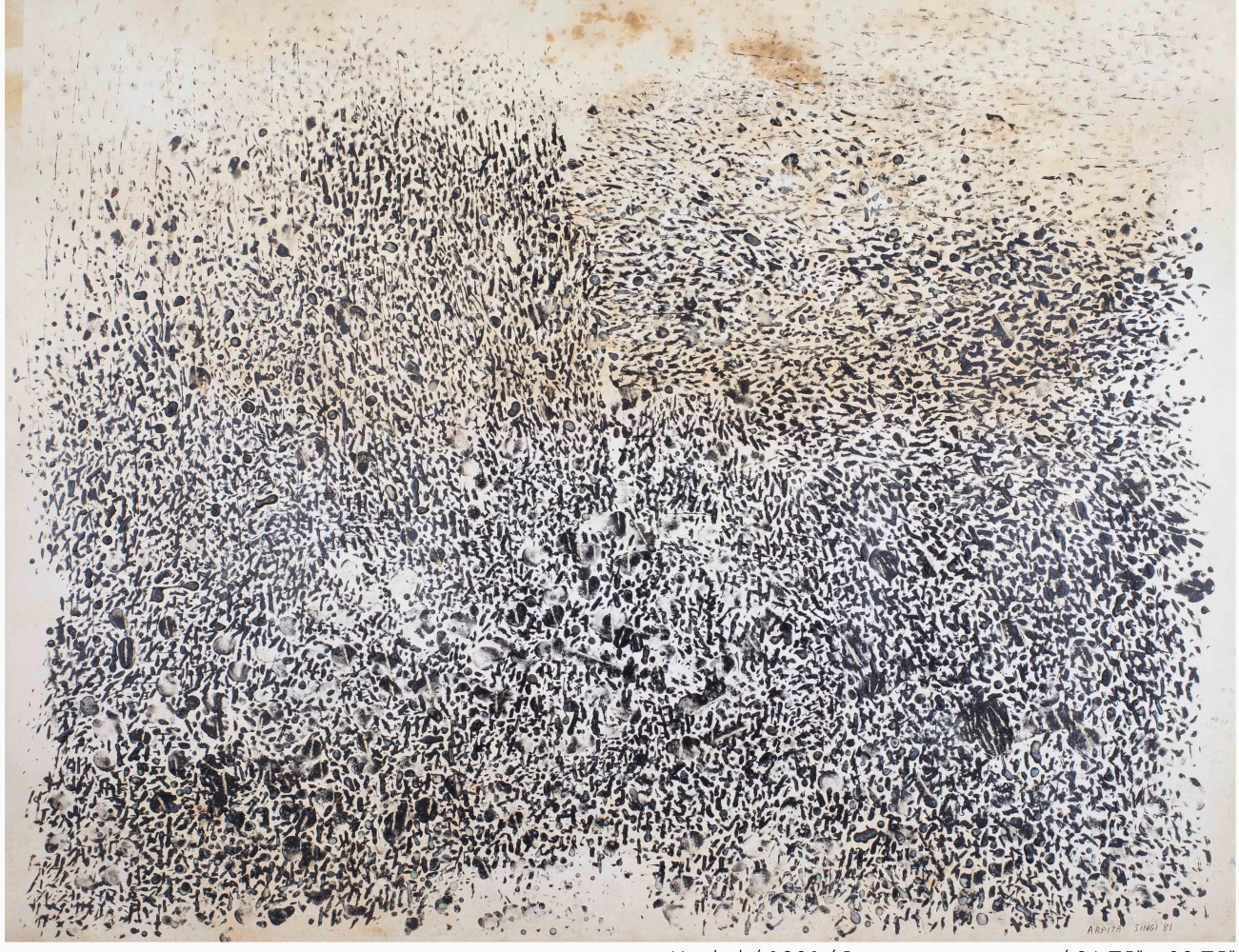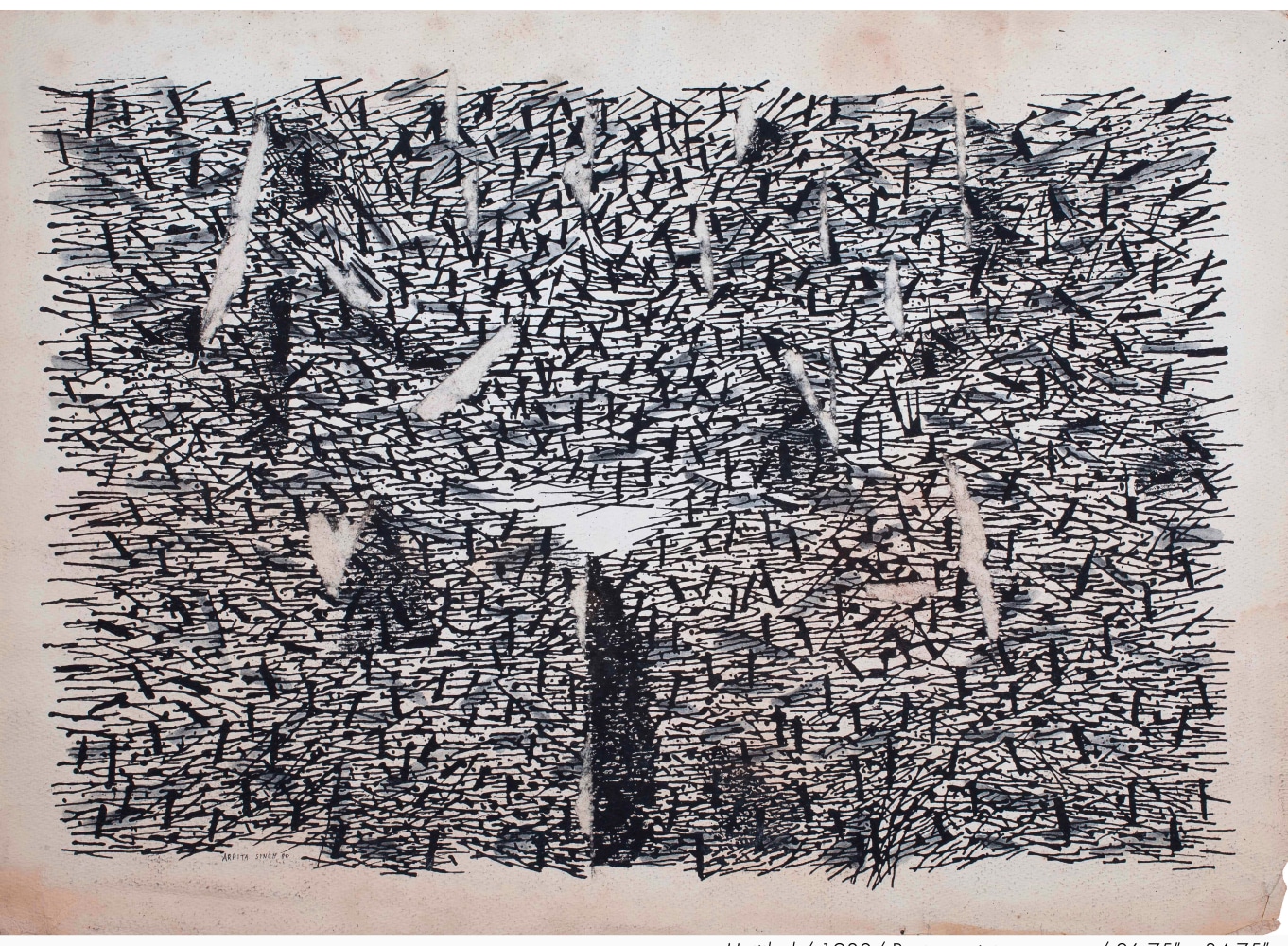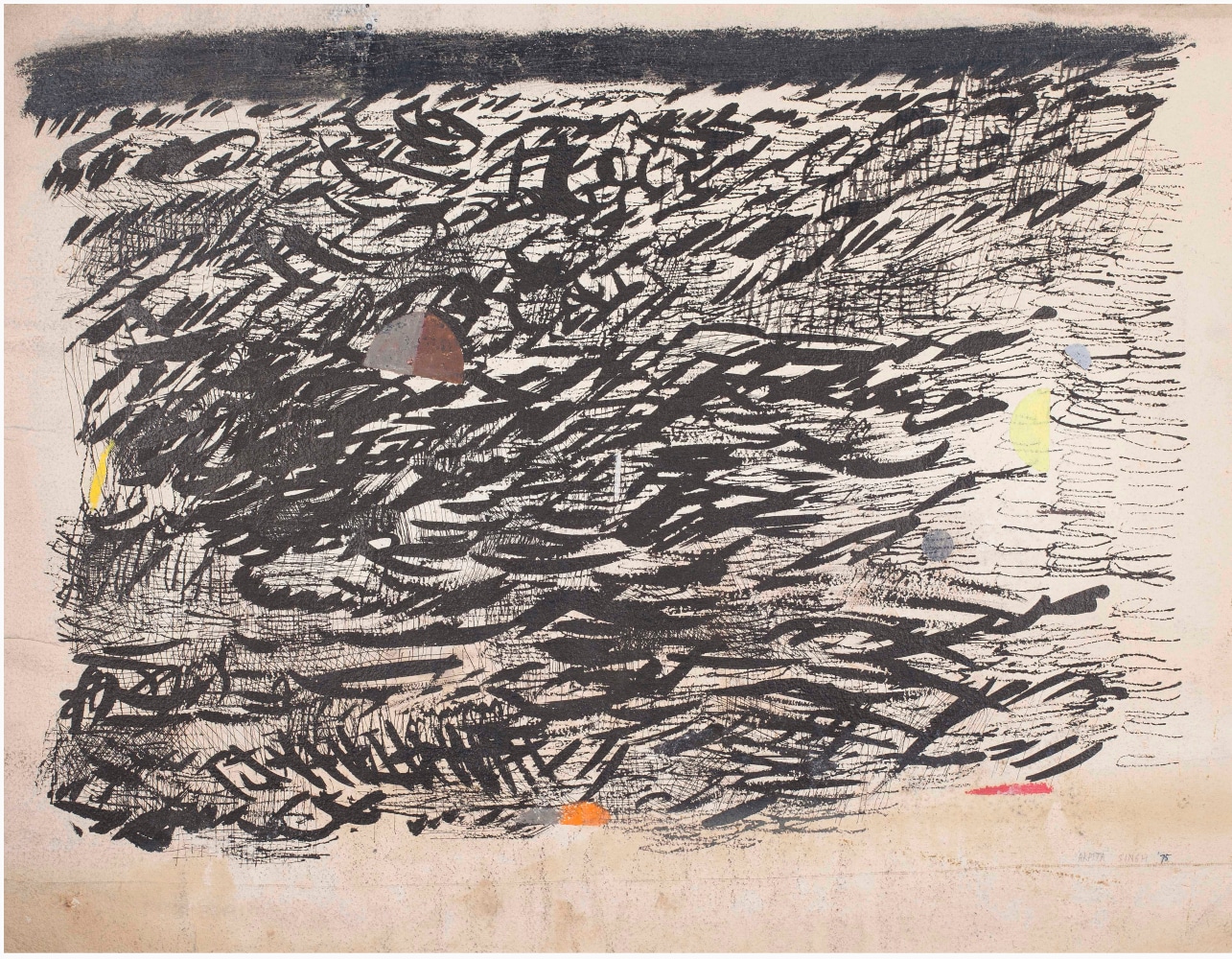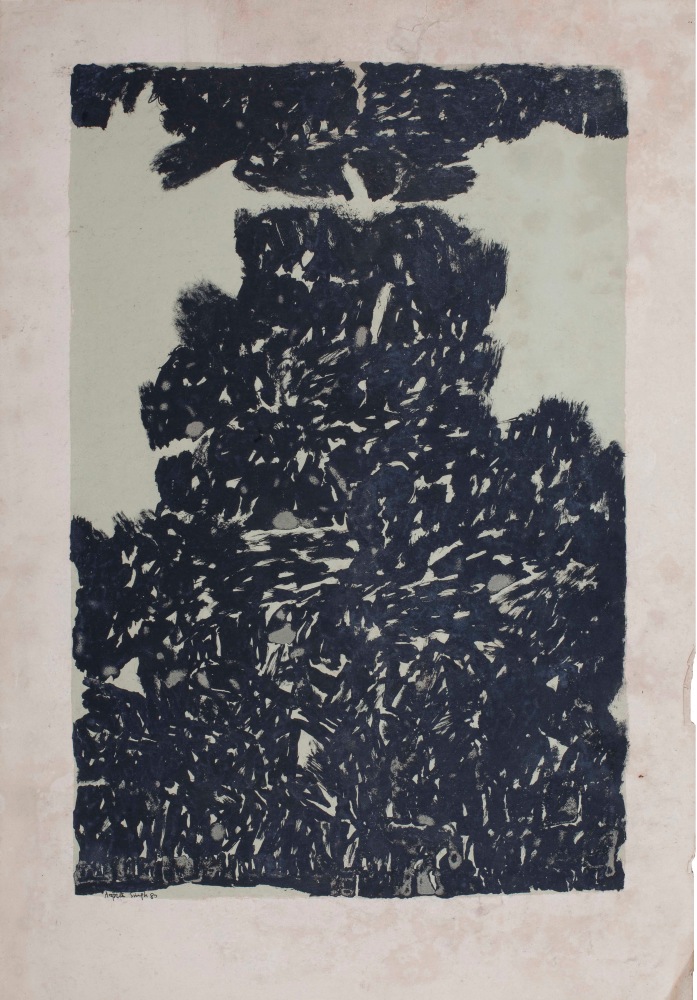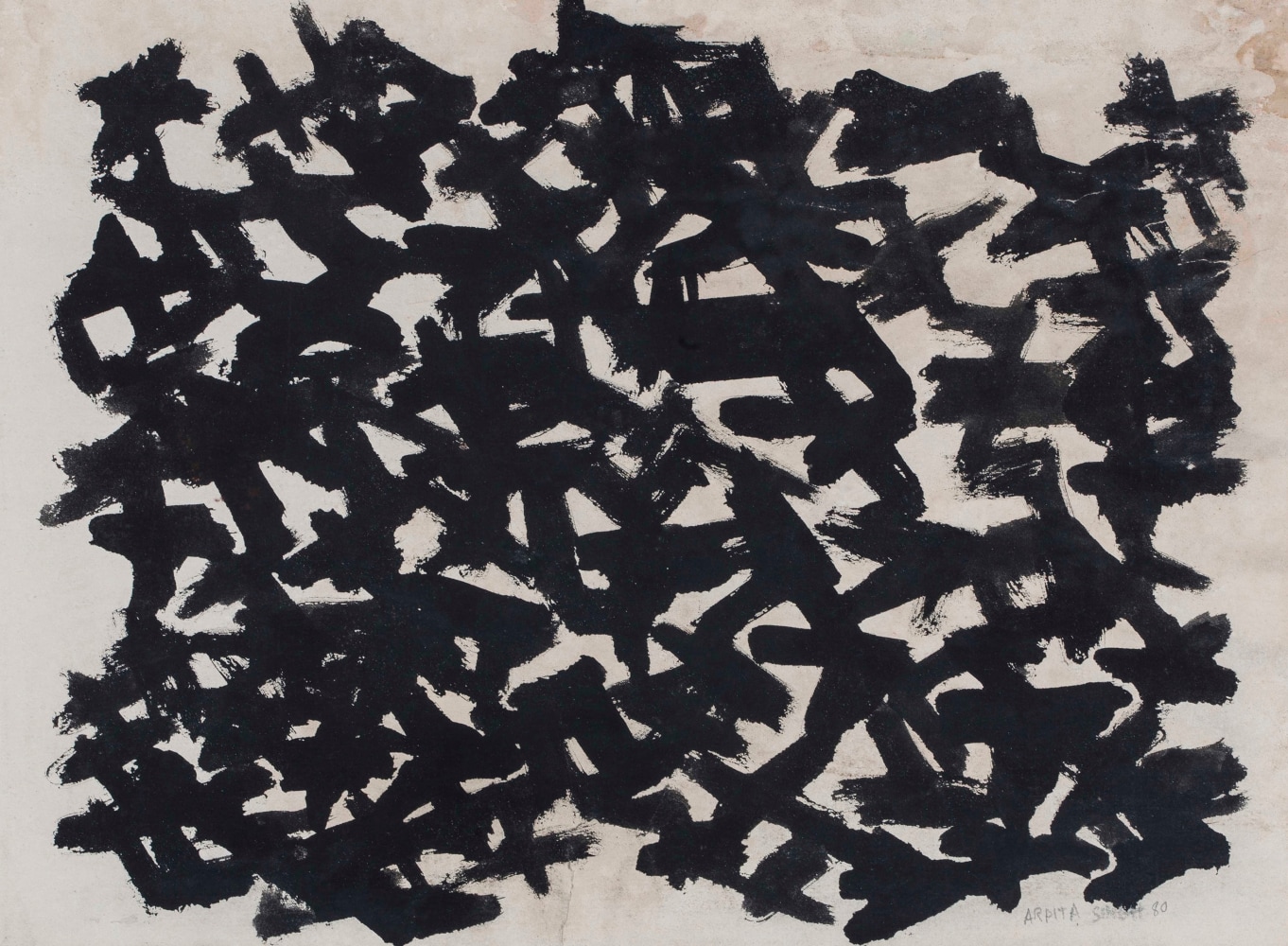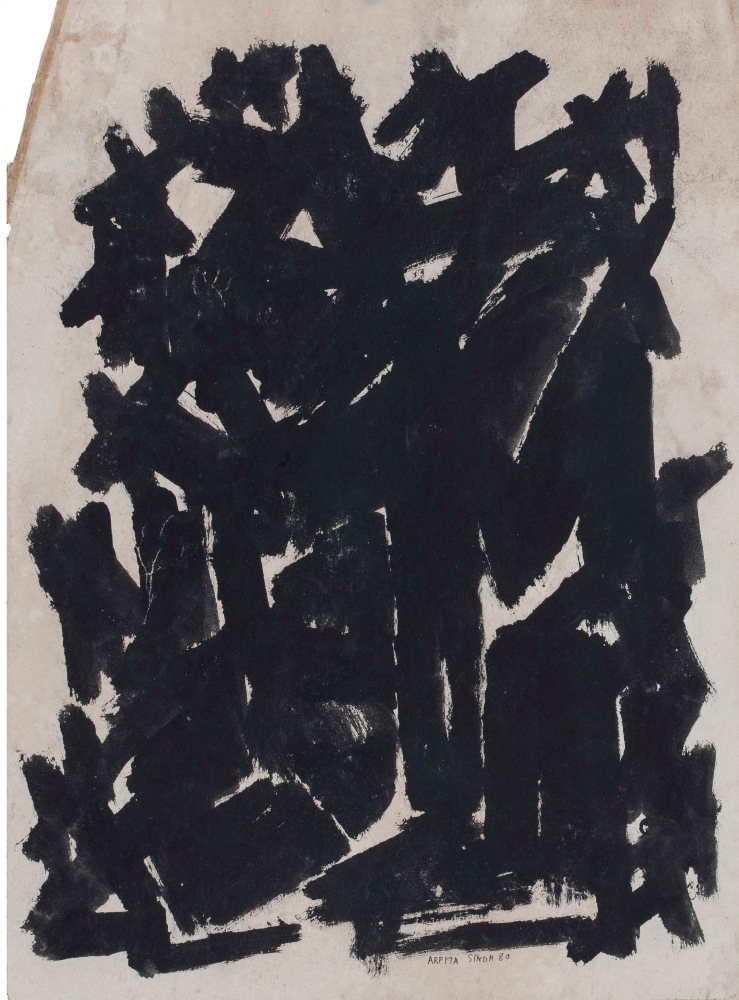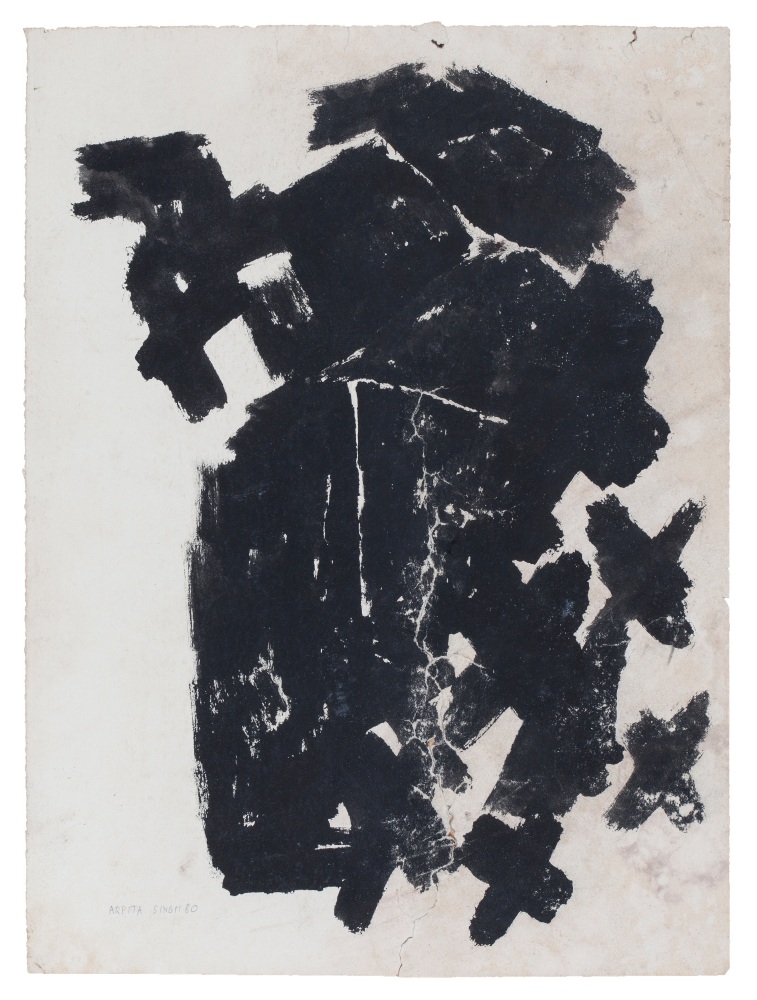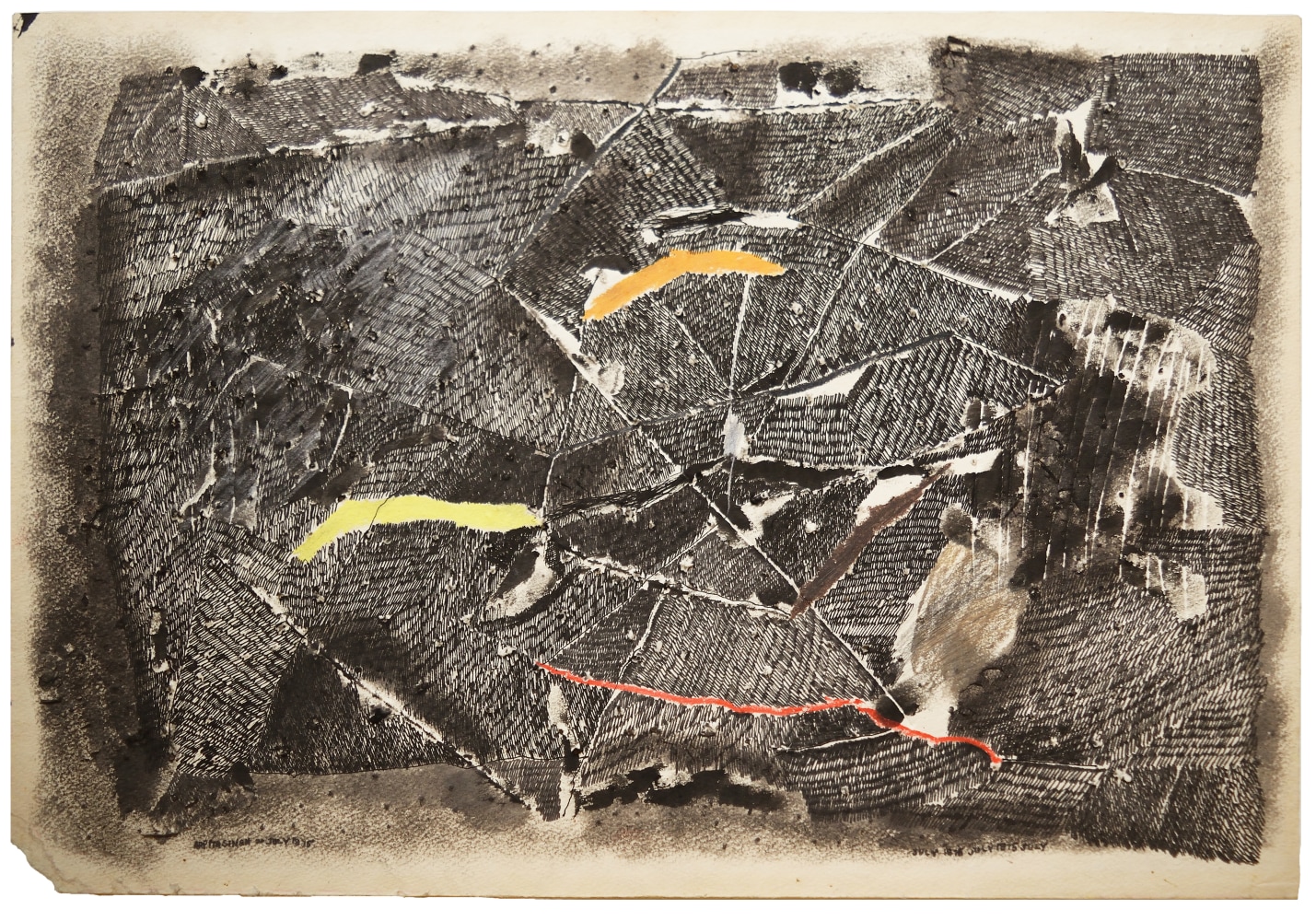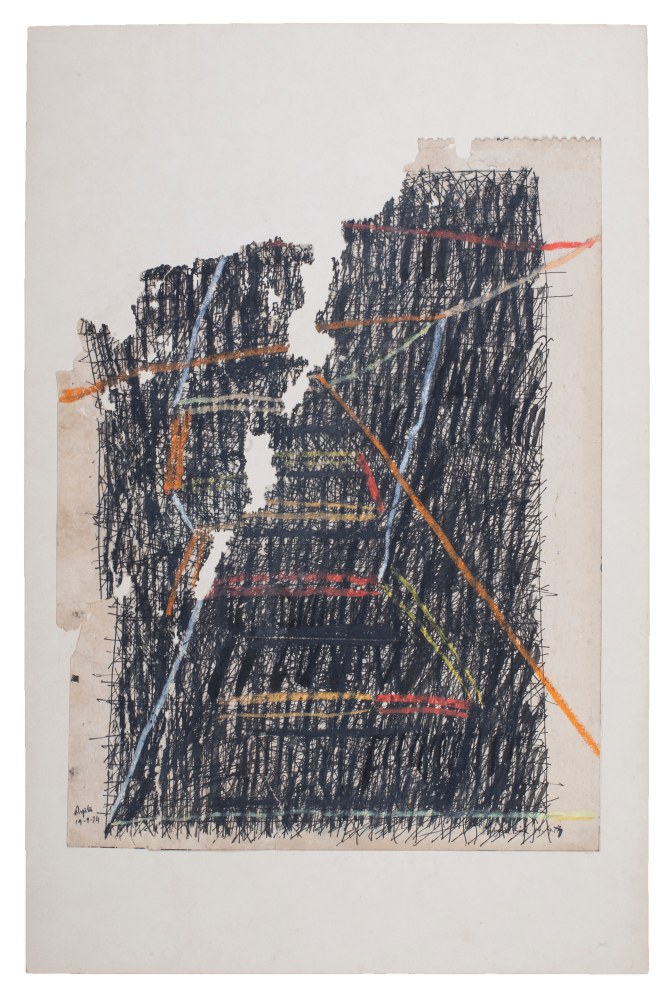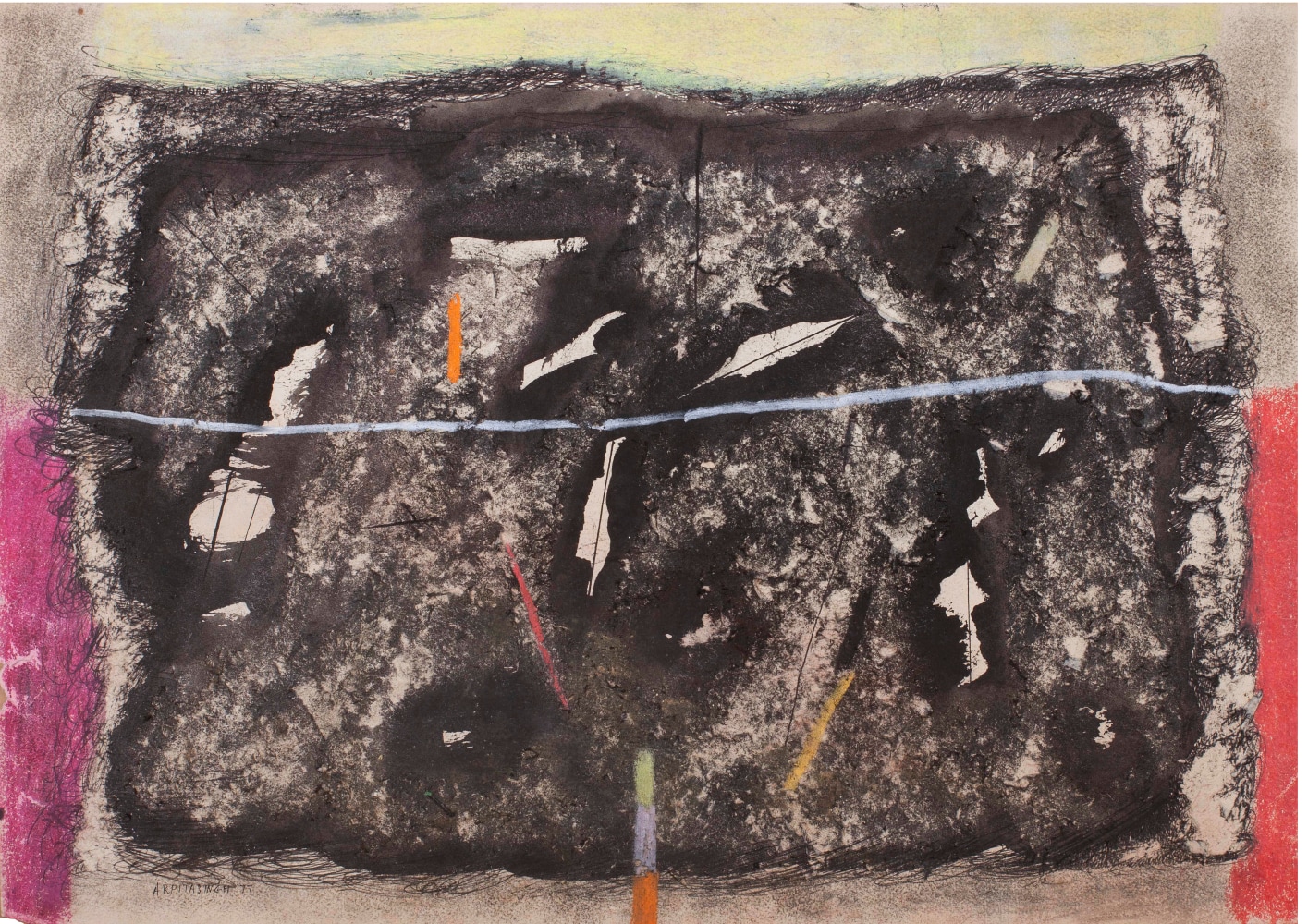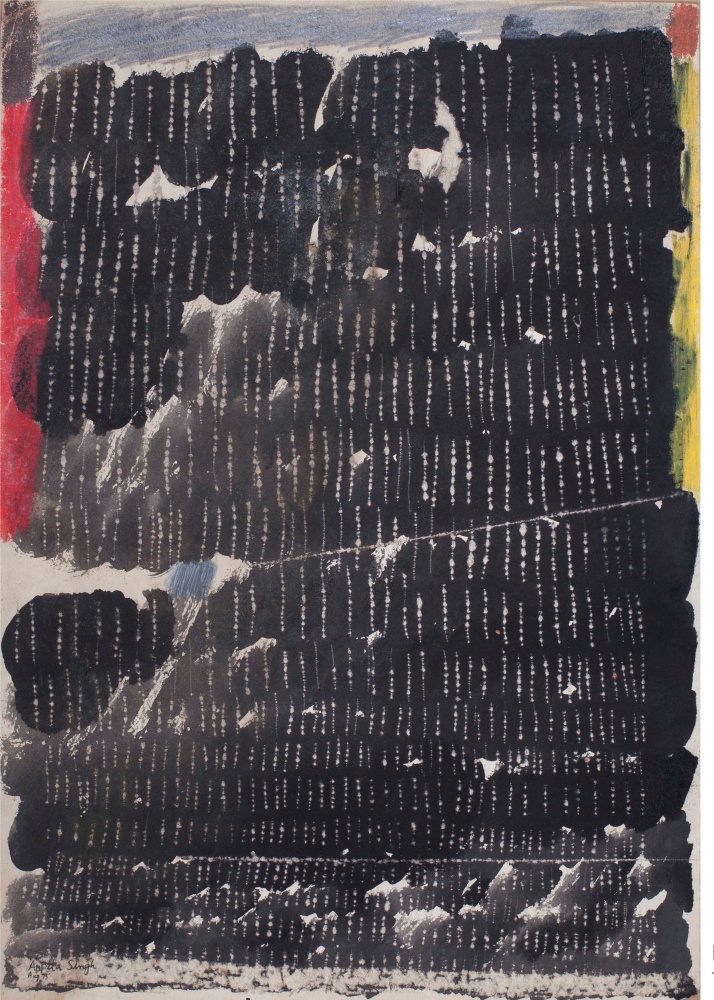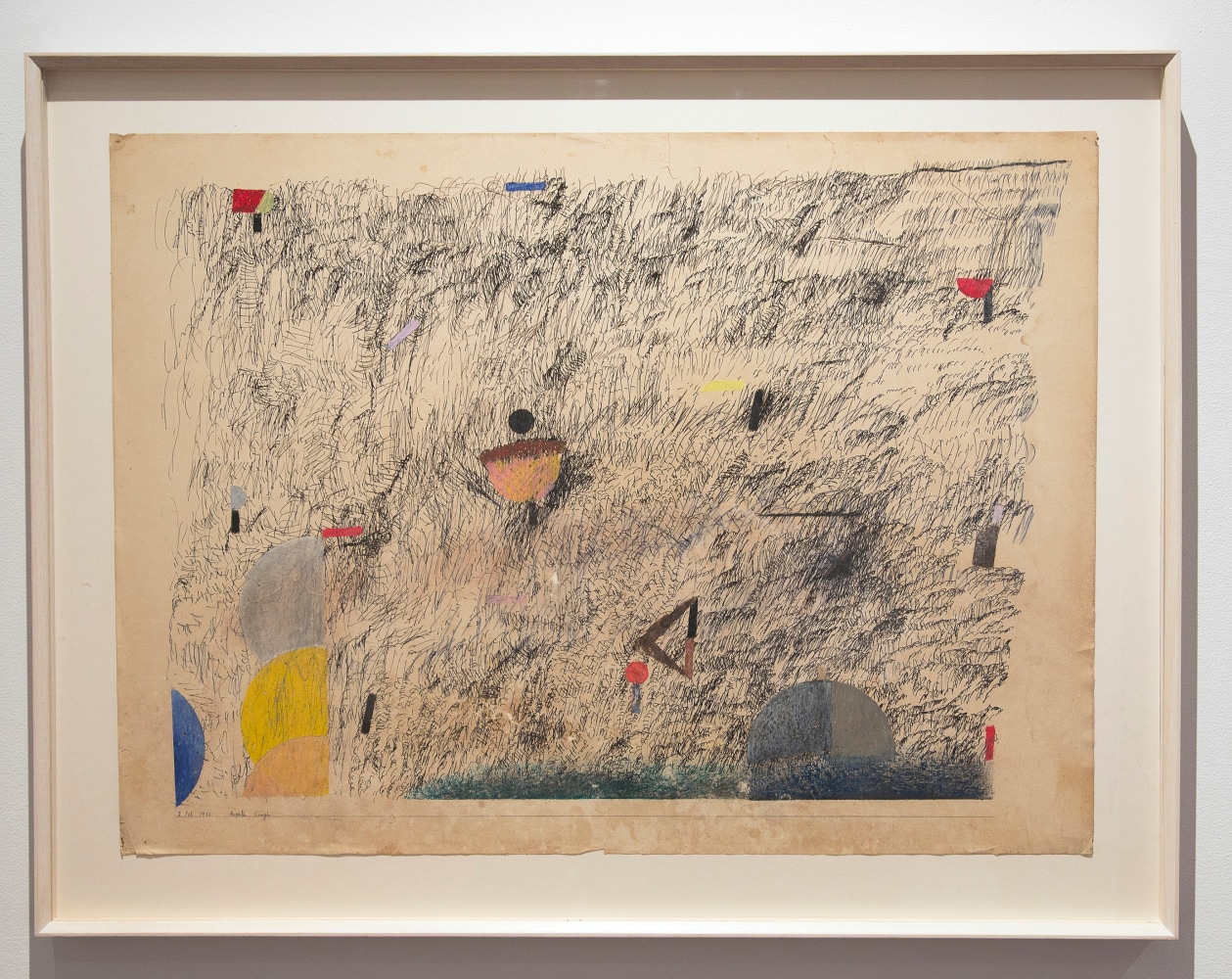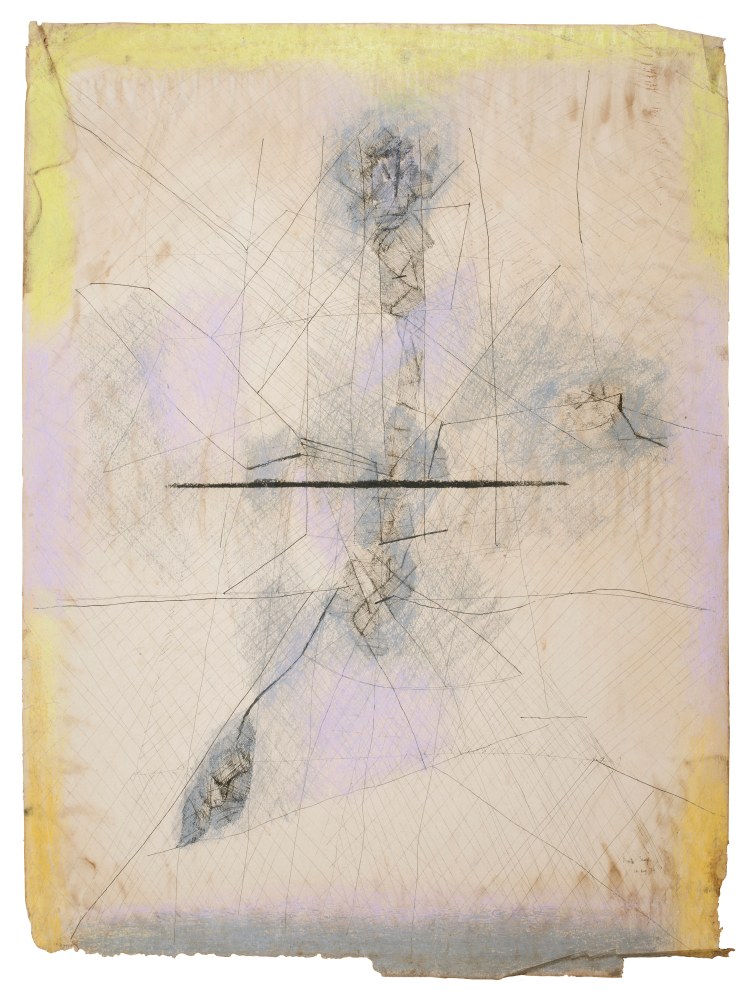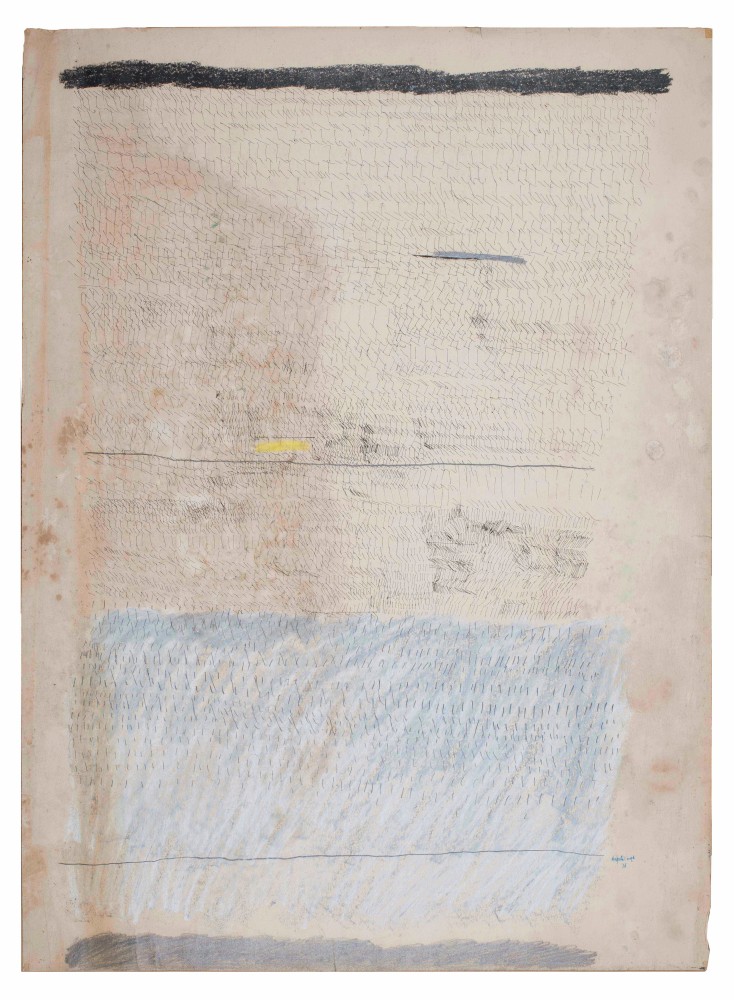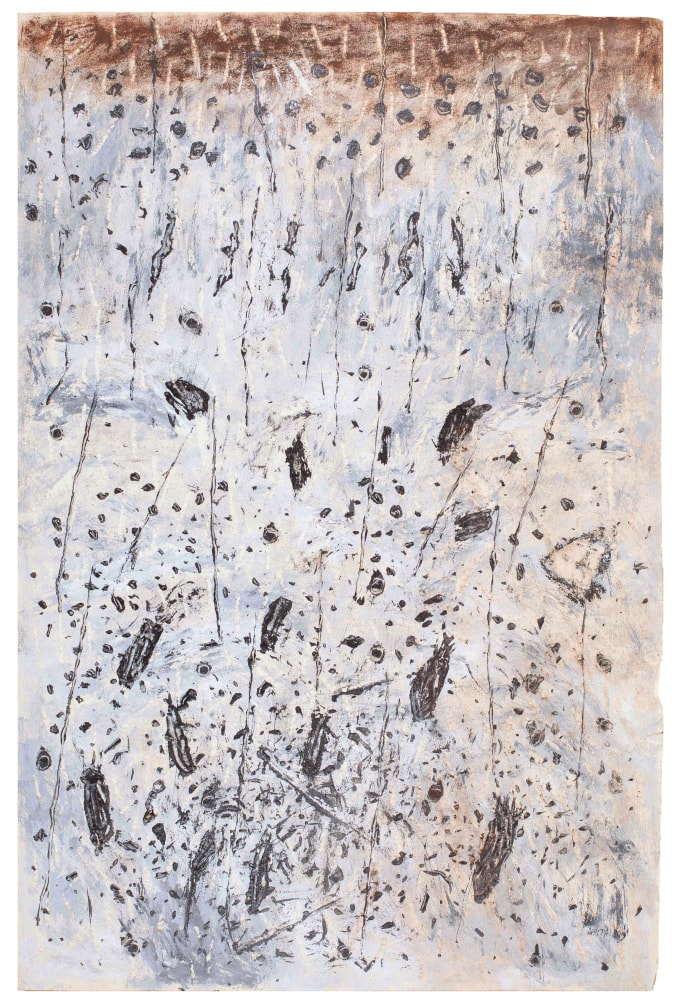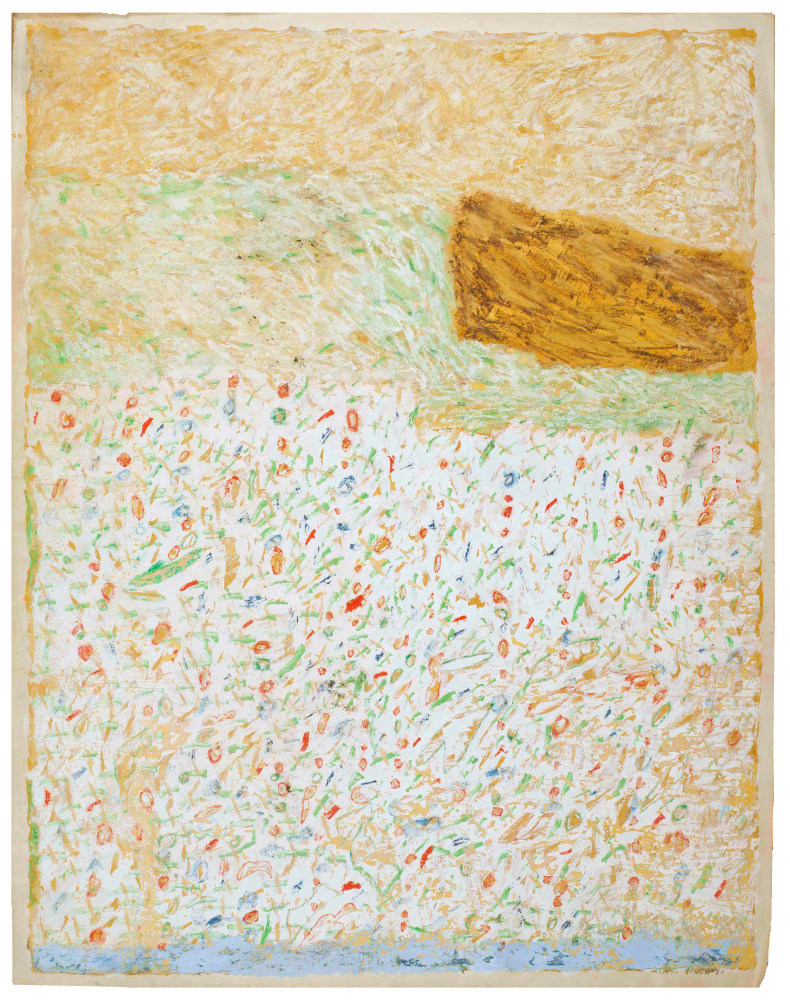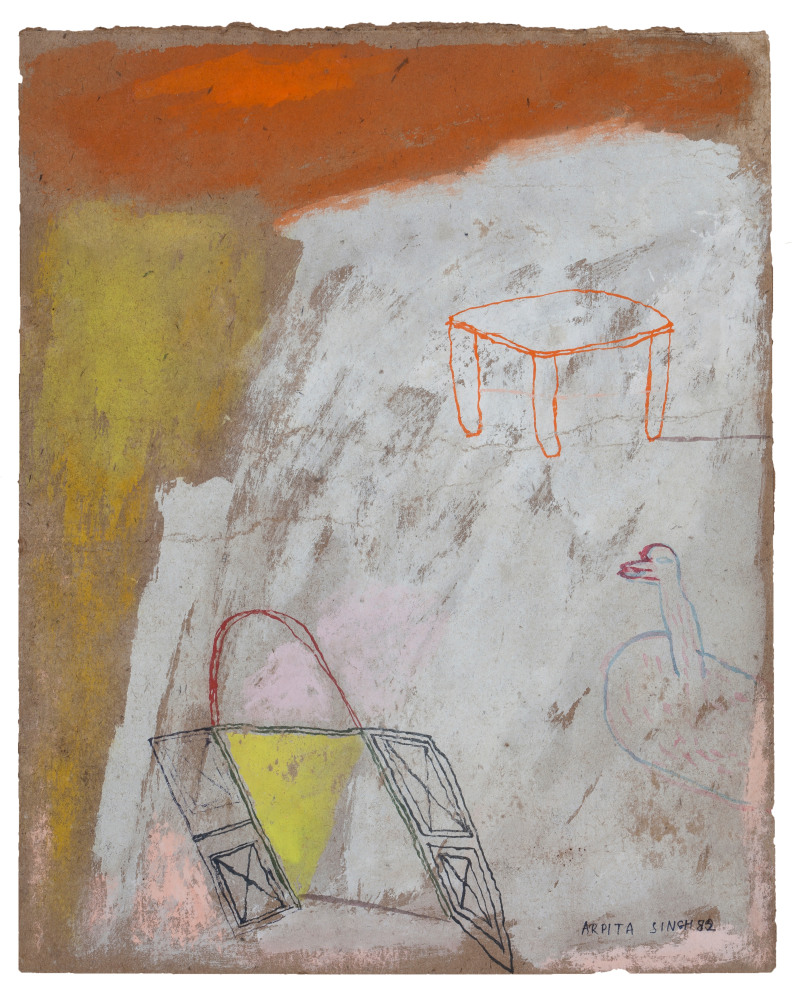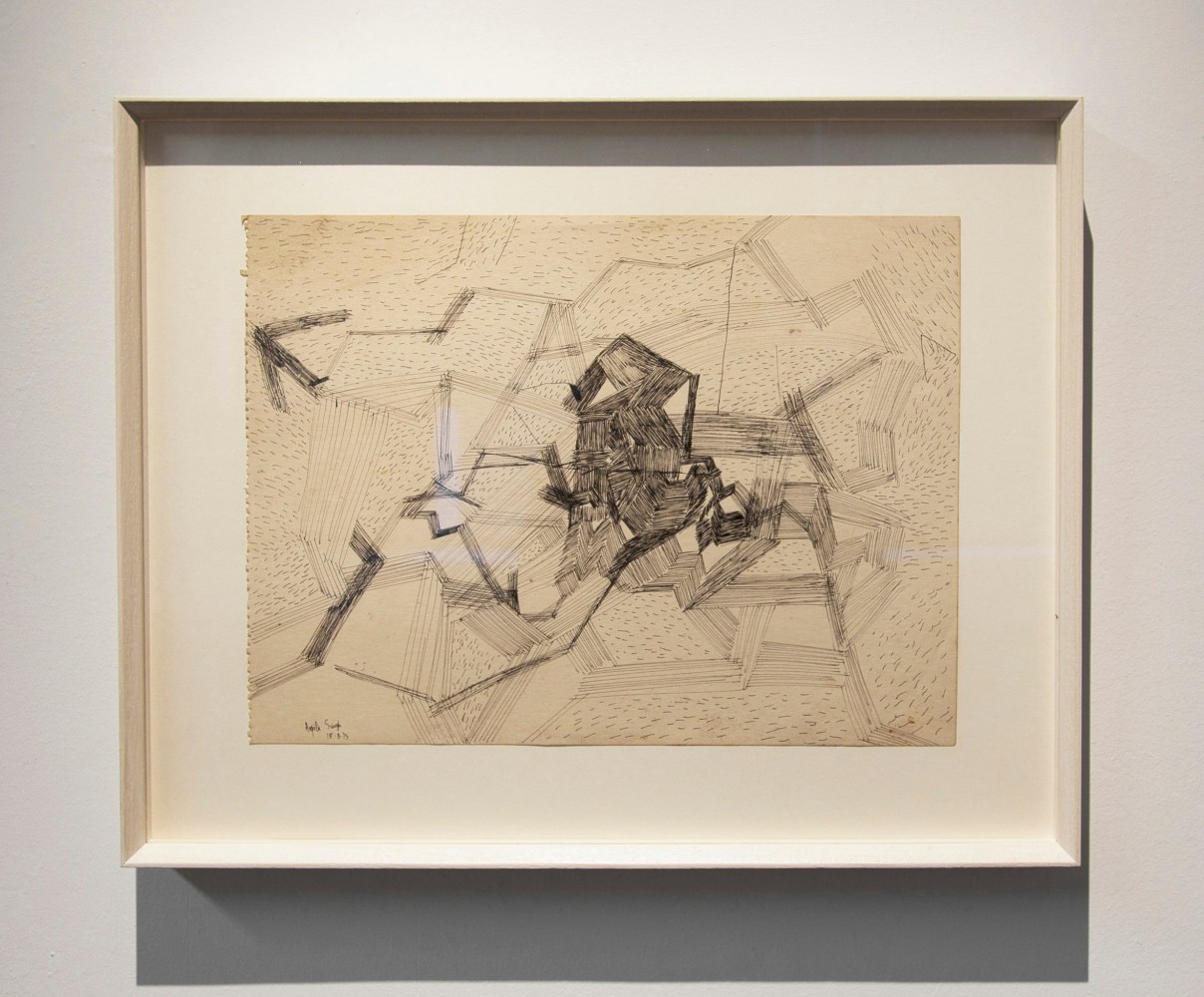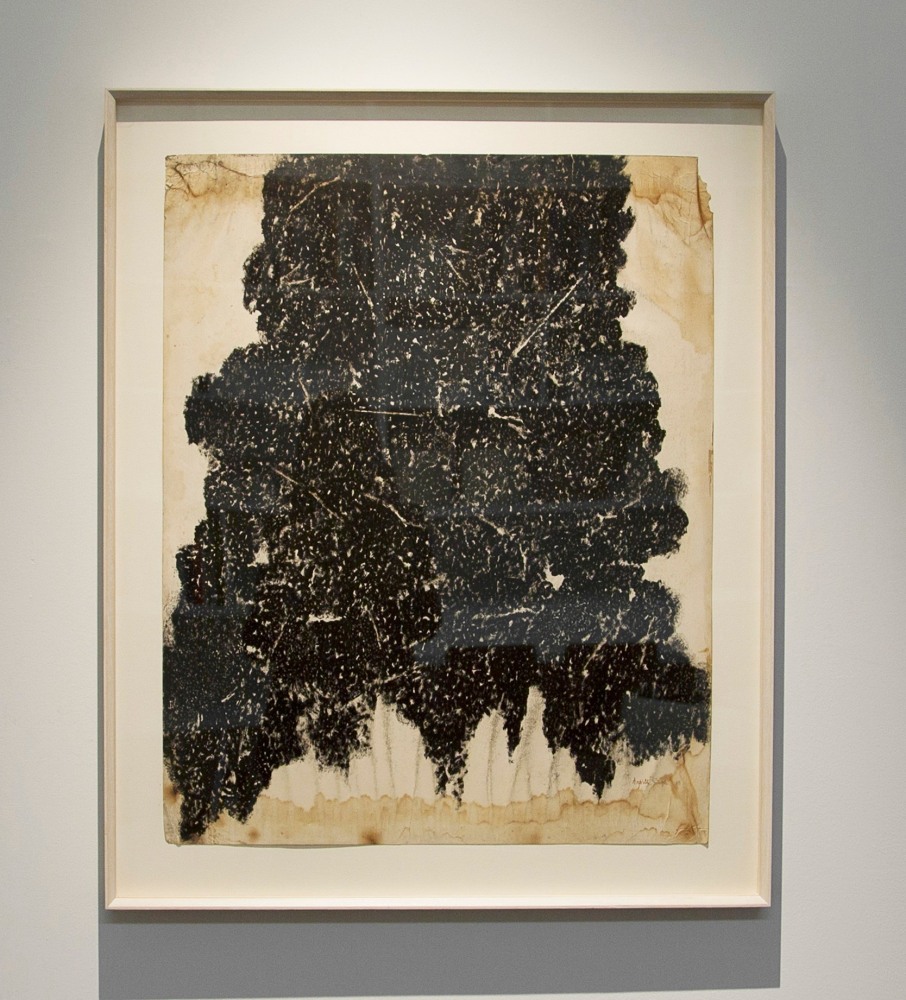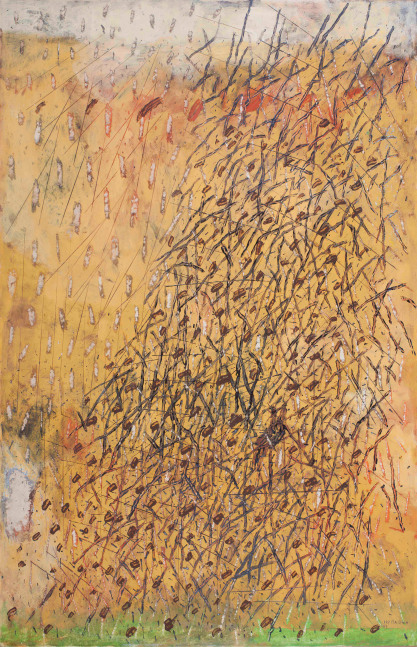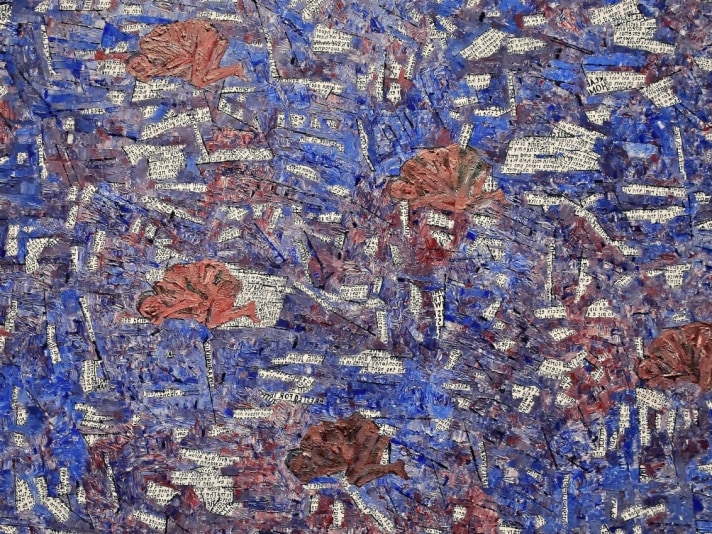
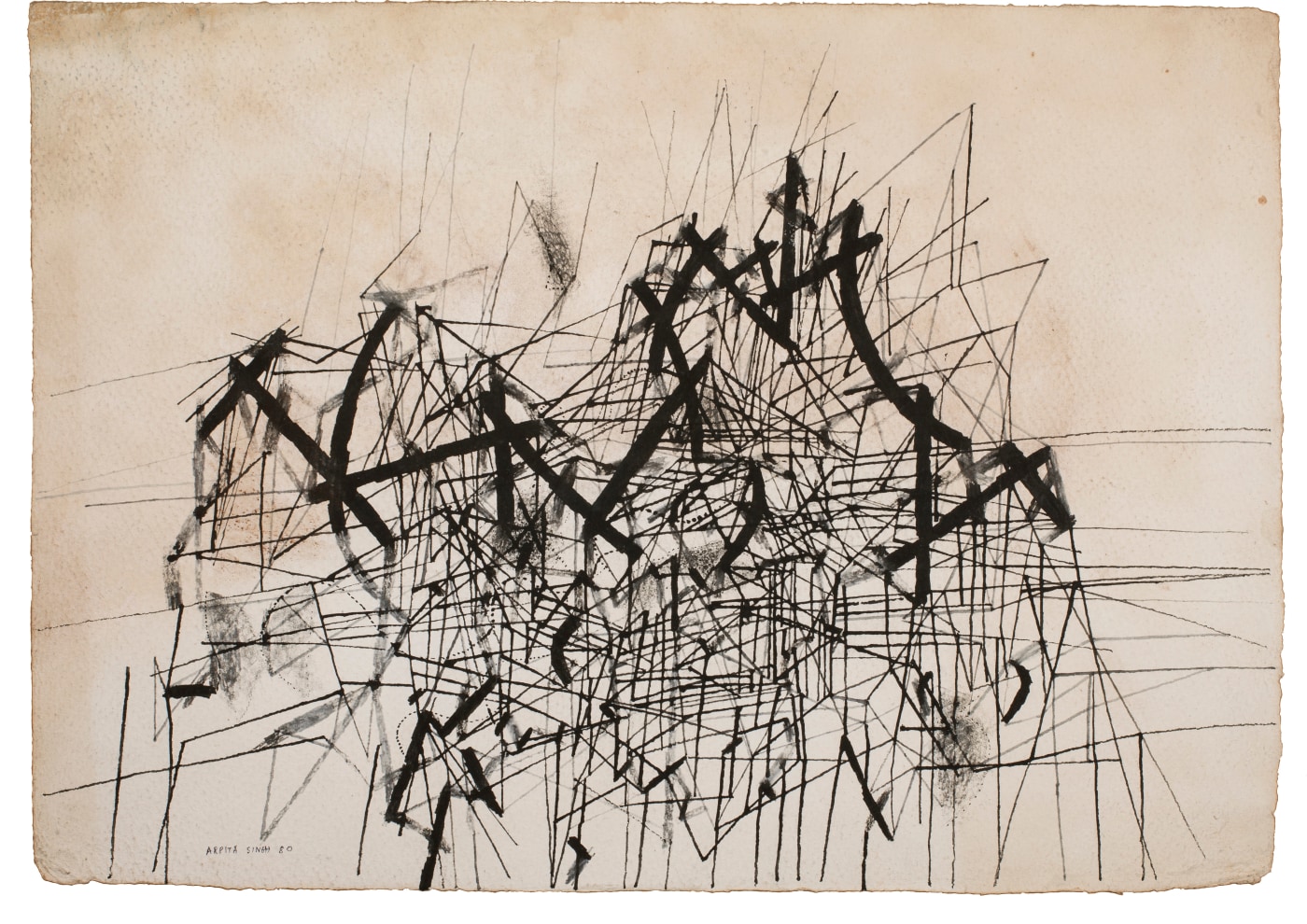
Untitled, 1980 Poster paint on paper 19 3/4″ x 27 1/2″
The works in Tying down time—predominantly abstract compositions on paper, principally reliant on line and primarily monochromatic—create an aesthetic bridge linking Singh’s early work with her better-known figurative paintings since the late 1980s. The works allow a rare insight into the formal foundations of Singh’s oeuvre, revealing both a serious curiosity about line, depth and space and a playful improvisation—a willingness to suspend certainty in the search for new. These tendencies continue into and indeed sustain Singh’s later practice are first glimpsed here: the short, impulsive, and repetitive stroke of the pen, and later the brush; the tendency for these marks to converge and condense, building up into form or coalescing into a pattern. Dense yet fragile textured surfaces seem to just hold together as if concealing the turbulence below. Tracing the past as well as foreshadowing the future, the works in Tying down time point to Singh’s engagement with textiles, a result of her time spent as a designer at the Weaver’s Service Centre in Delhi during the 1960s. Calling on and then expanding the structure of warp and weft, Singh’s works make use of the relative openness of the page—becoming records of a remarkable period of freedom in her practice, spurred on by the desire, excitement, and uncertainty of experimentation.
“The drawings are stark and sensuous, bleak and overflowing. They evoke joy and tragedy, purpose and purposelessness. I found them deeply moving, even if I could not give a name to what I was feeling.”
Hyperallergic
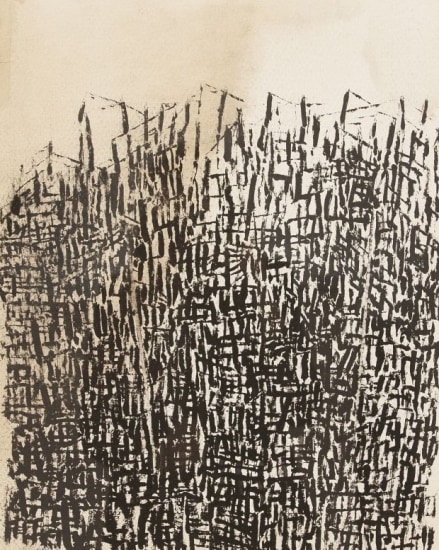
Untitled, 1980 Poster paint on paper 27 3/4″ x 19 3/4″ (Detail)
Singh has long been celebrated for the large, figurative paintings that followed the rich period of innovation considered in this exhibition. Vibrantly colorful and iconographically dense, these works gesture towards mythology and folklore, while drawing on the expressiveness of the line and textures evident in Tying down time. Singular in their allusion to contemporary Indian life, Singh’s works forge a unique visual vocabulary and narrative sensibility that have had a major influence on the generations of artists who have followed her.
Arpita Singh was born in 1937 in West Bengal, India, and moved with her family to Delhi in 1946, where she has since lived and worked. She attended the School of Art, Delhi Polytechnic, and after graduating, she worked as a textile designer at the Weaver’s Service Centre, part of the Handloom Board of India. Her work has been featured in exhibitions around the world, including the Royal Academy of Arts, London; The Pompidou Centre, Paris; Museo Nacional de Centro Reina Sofia, Madrid; Peabody Essex Museum, Salem, MA; Museum of Fine Arts (MFA), Boston, MA; Kiran Nadar Museum of Art (KNMA), New Delhi; Fukuoka Asian Art Museum, Japan; Kunstmuseum Bern, Switzerland; Asia Society, New York; Art Gallery of New South Wales (AGNSW), Sydney; Rose Art Museum, Waltham, MA; Lalit Kala Akademi, New Delhi; National Gallery of Modern Art (NGMA), Mumbai & New Delhi.

